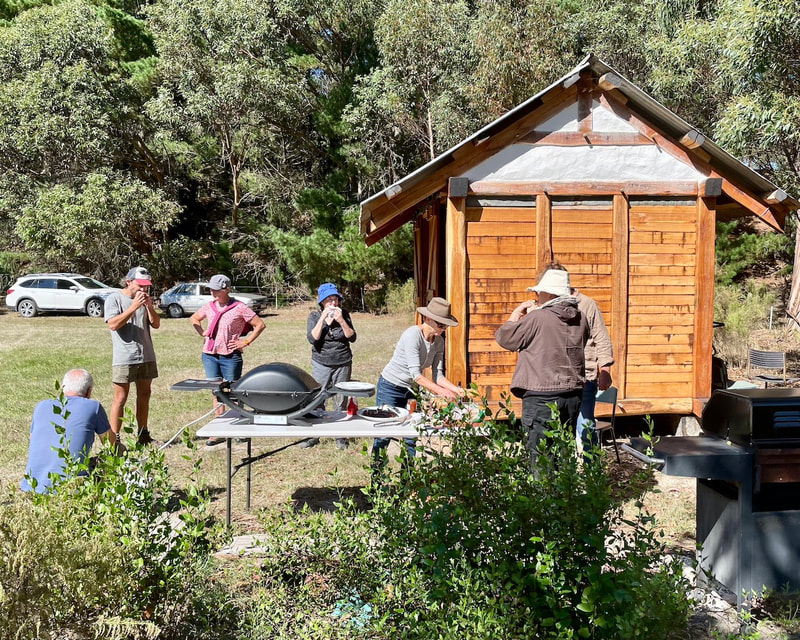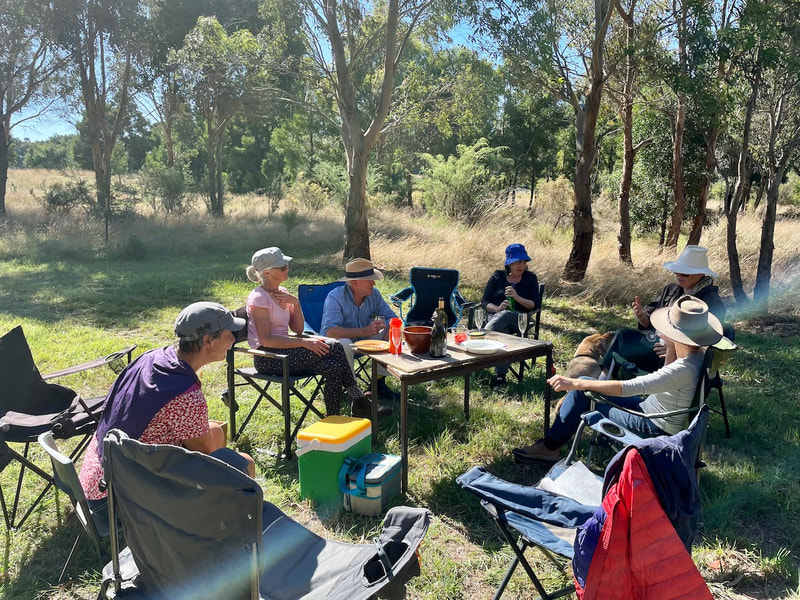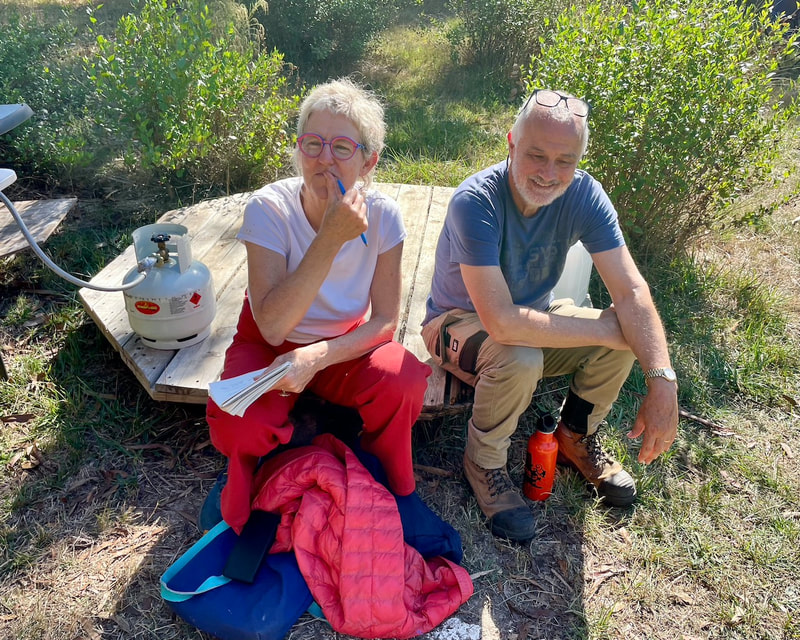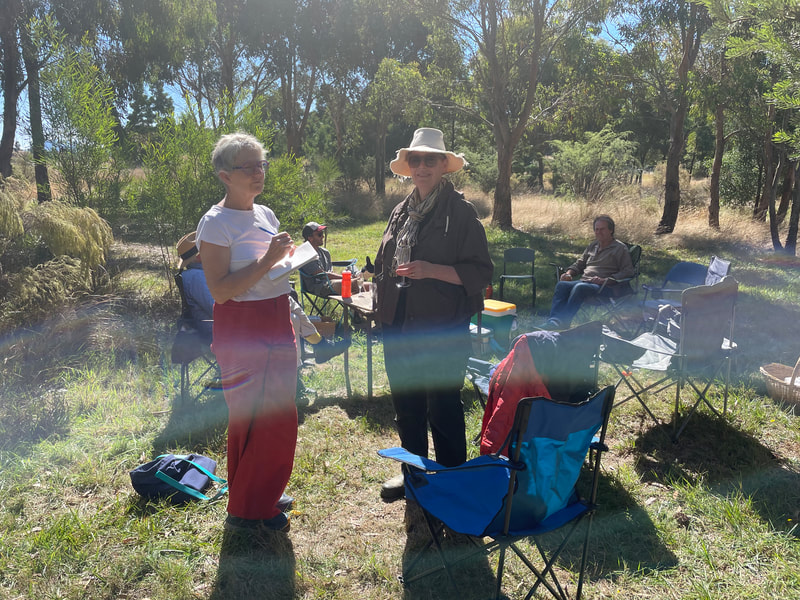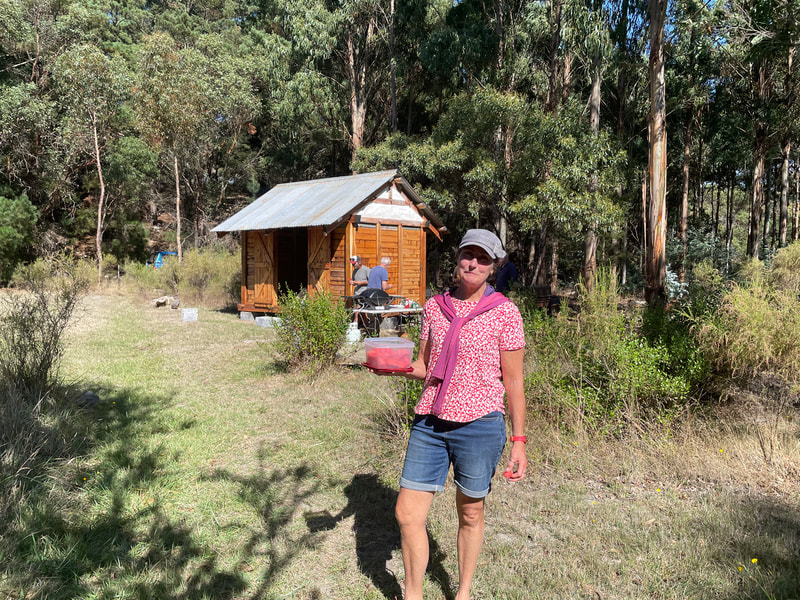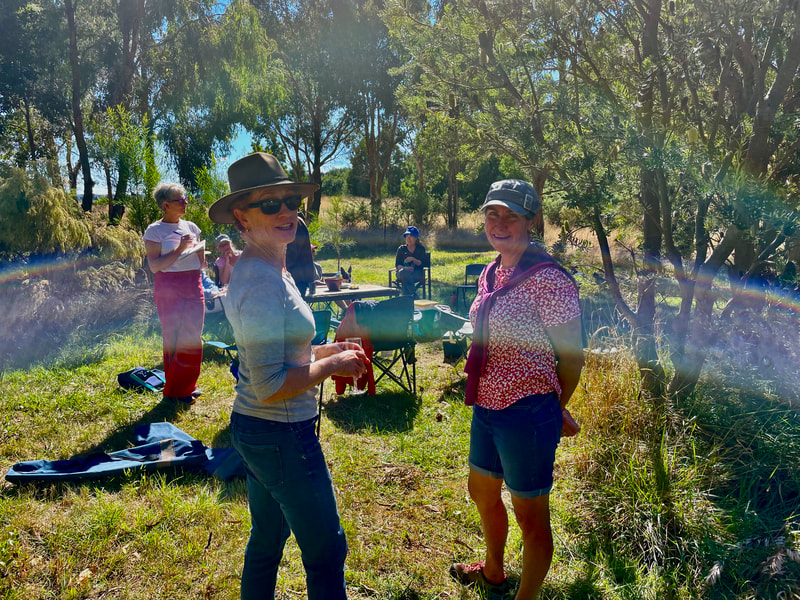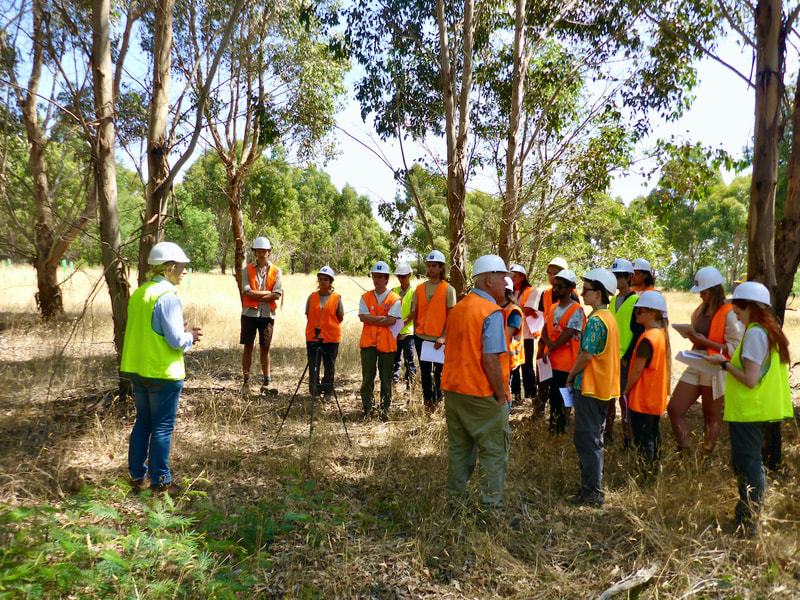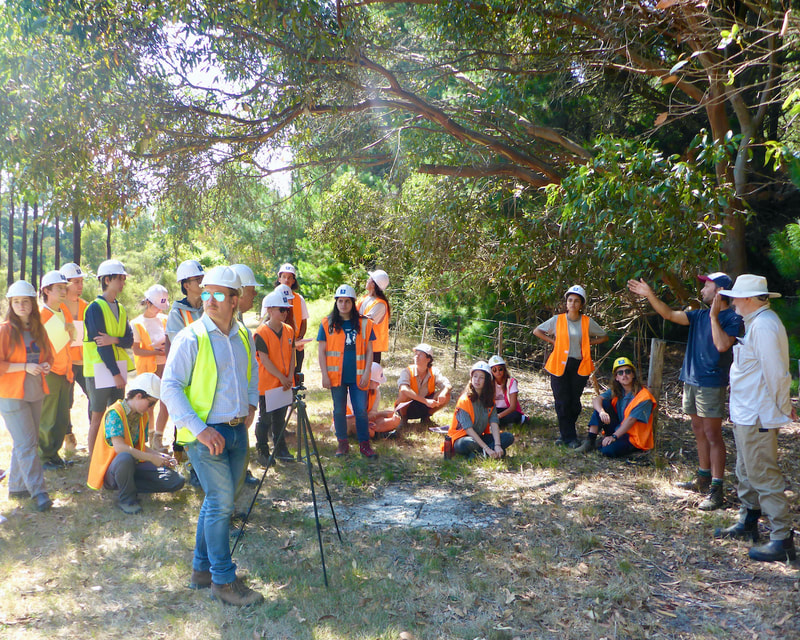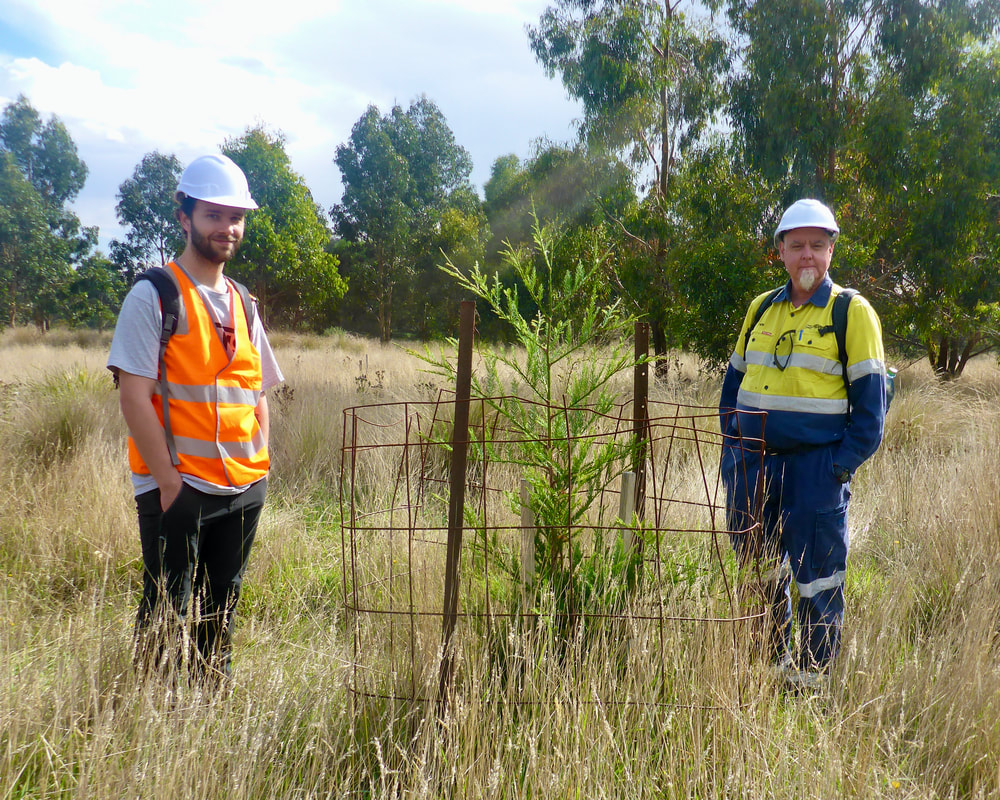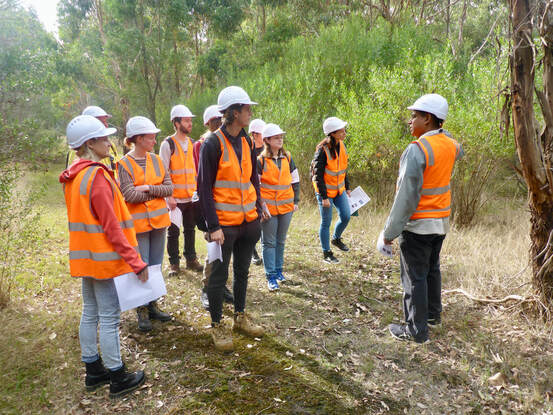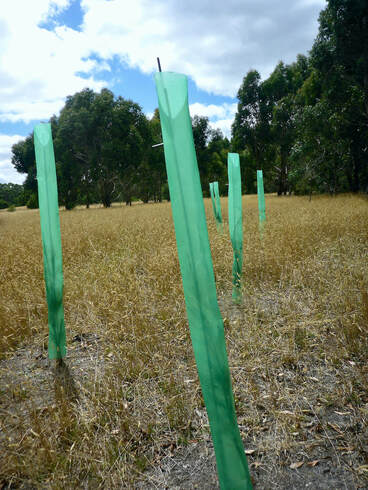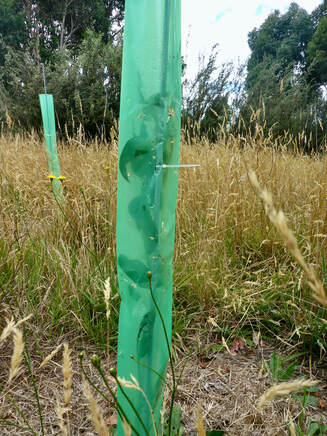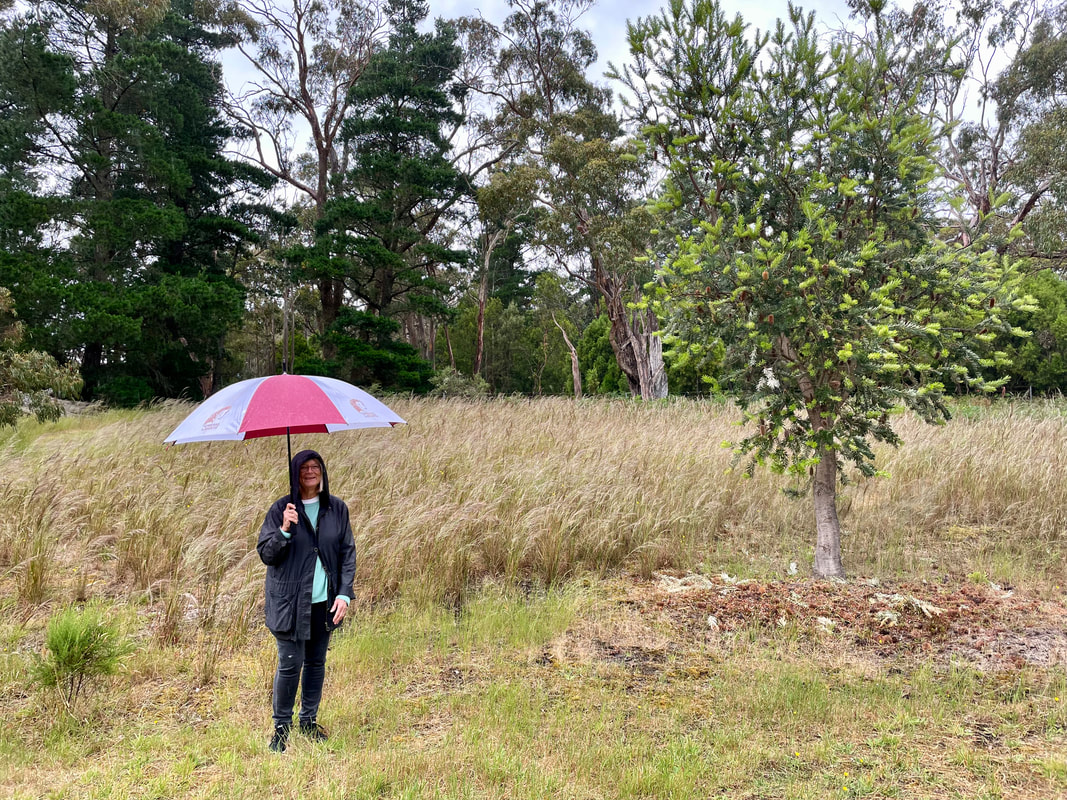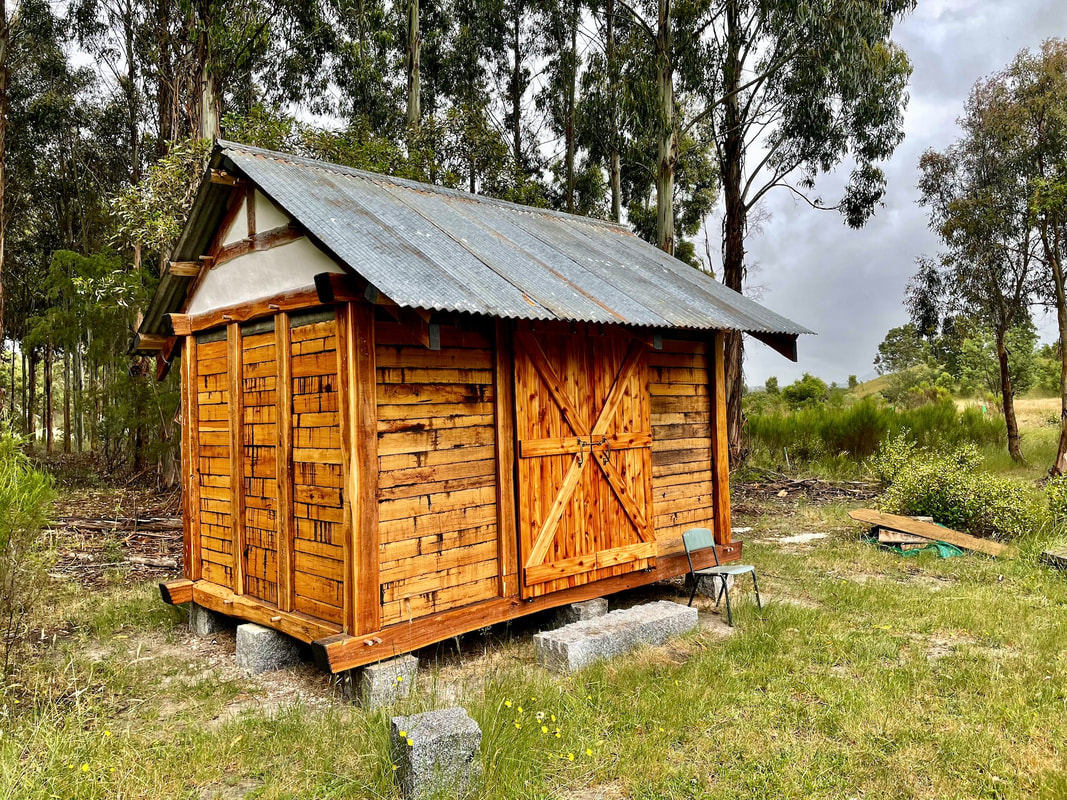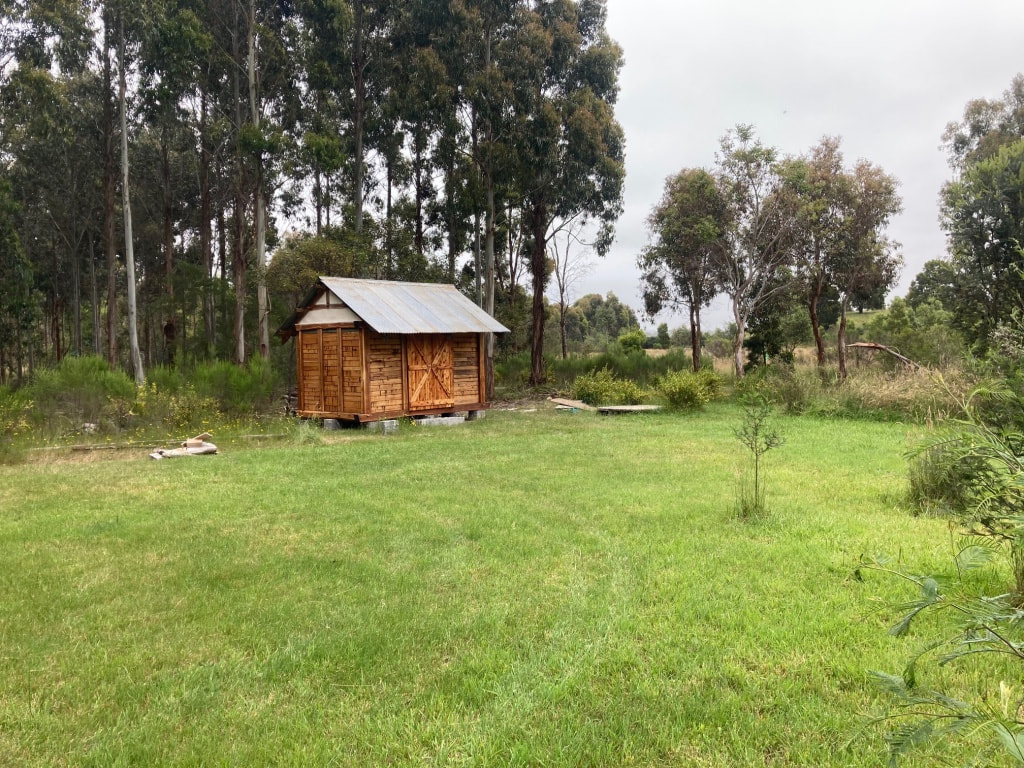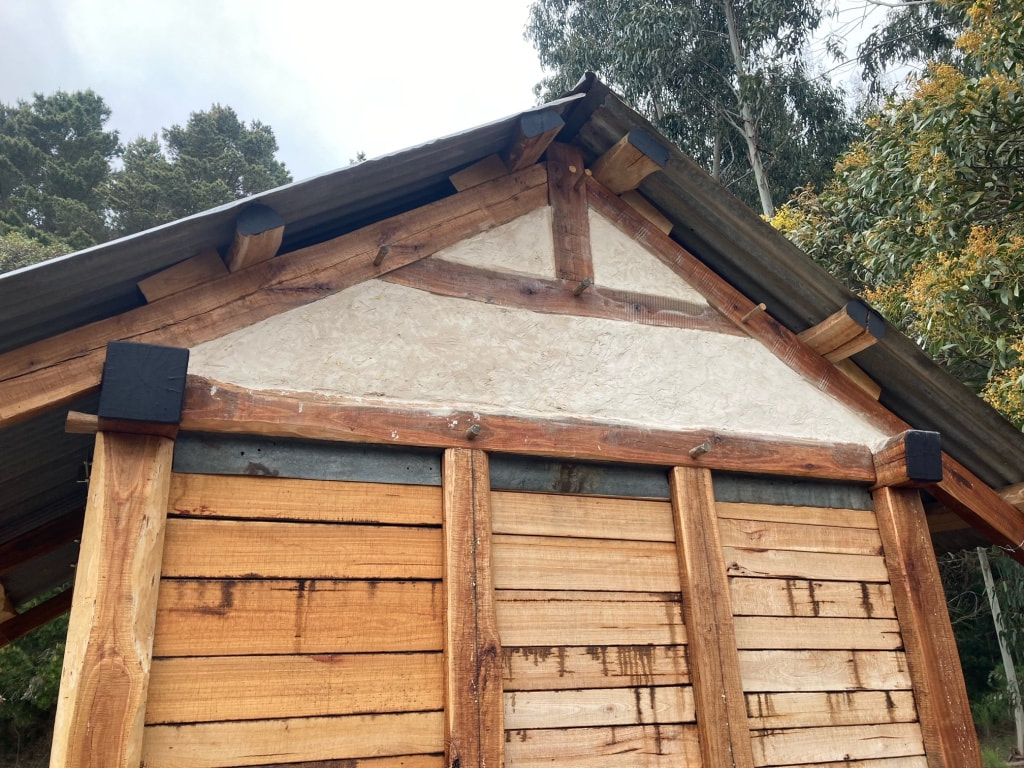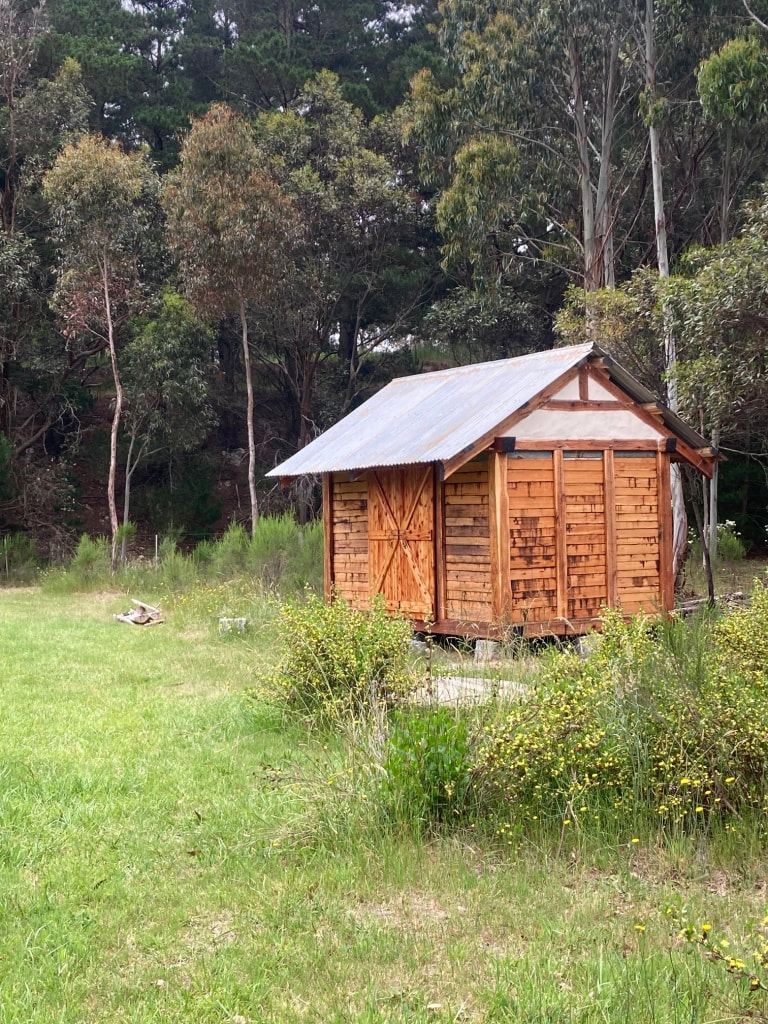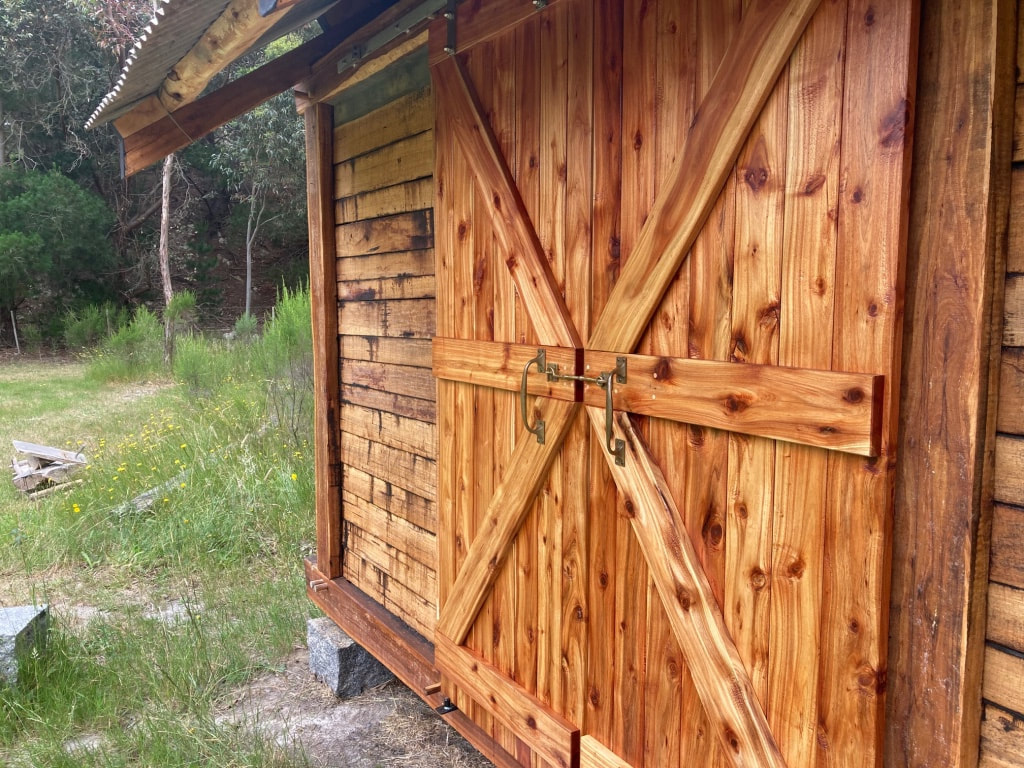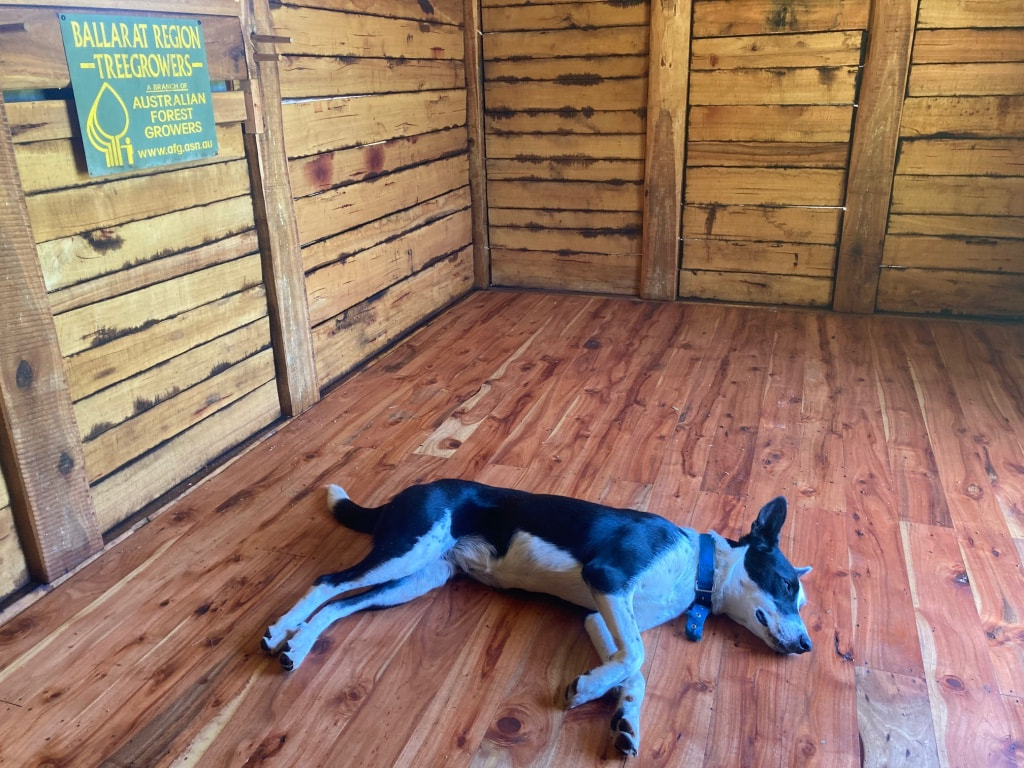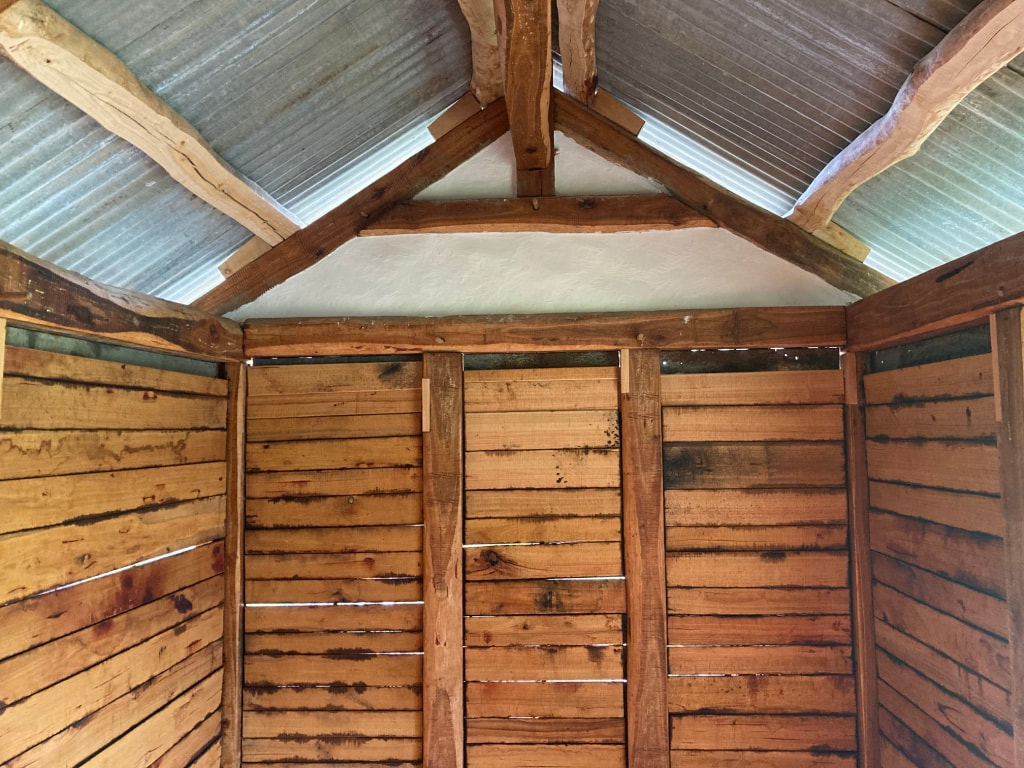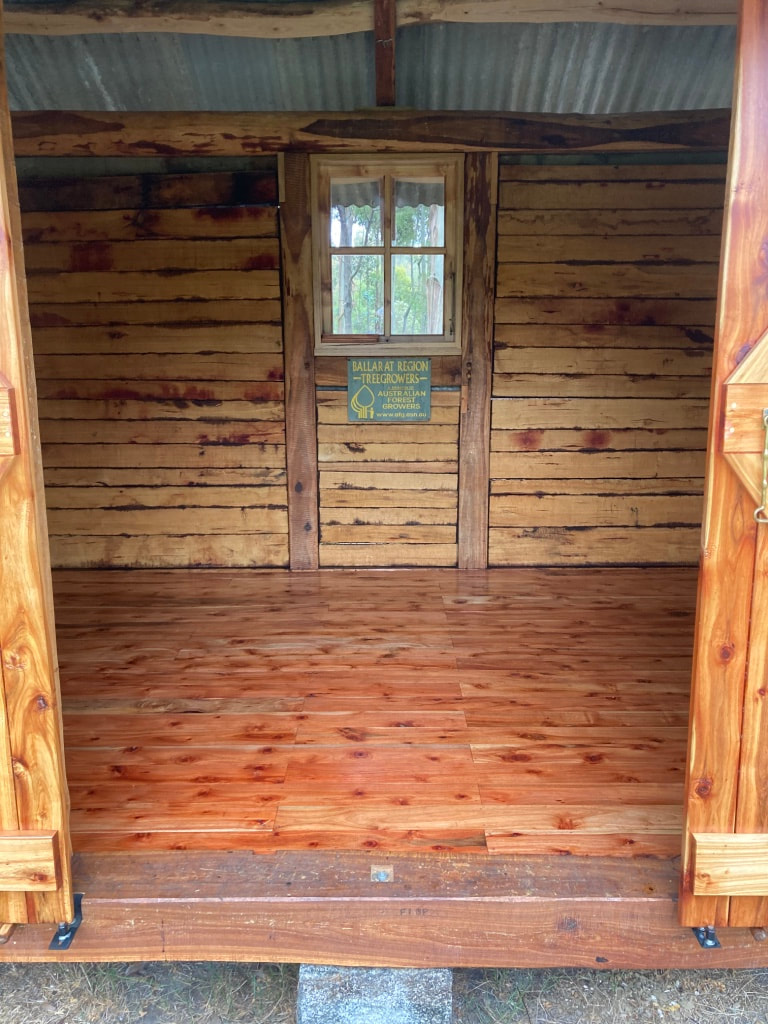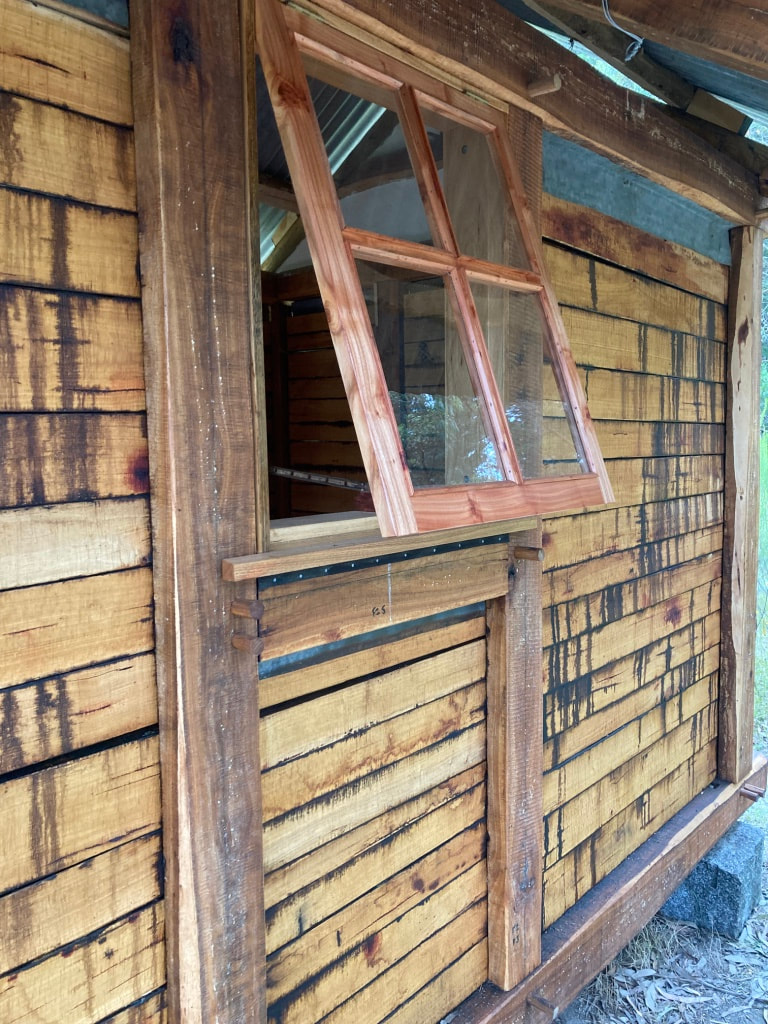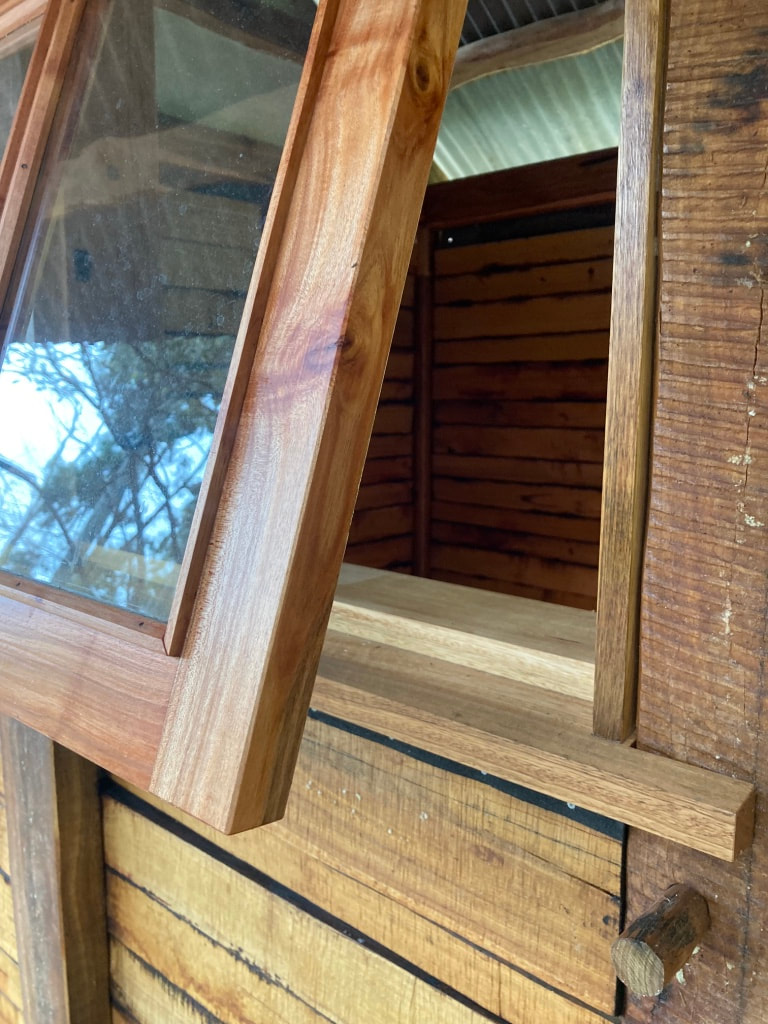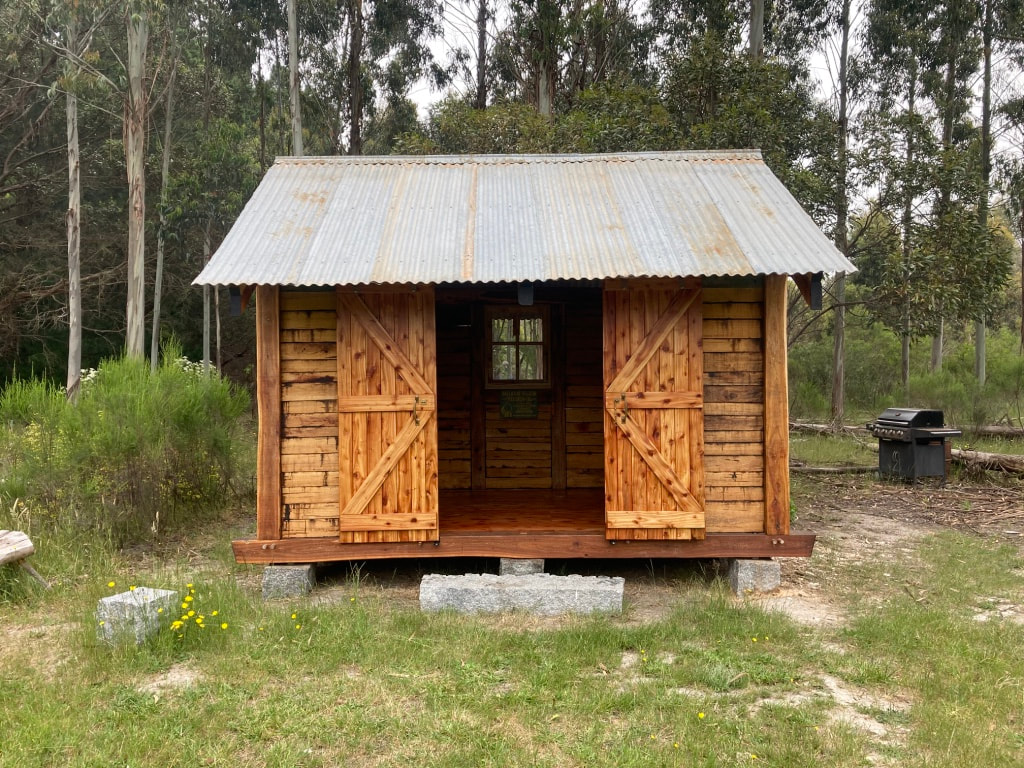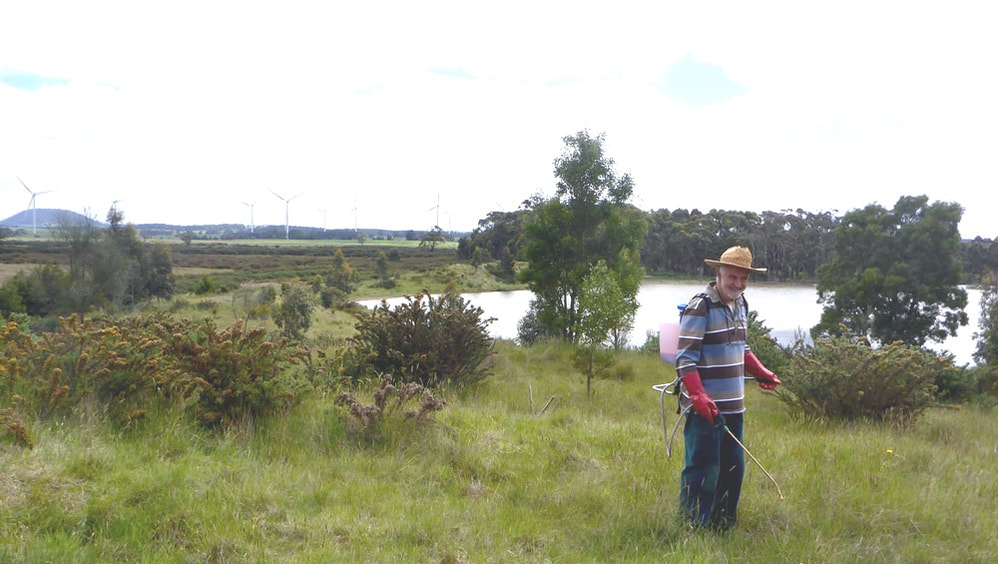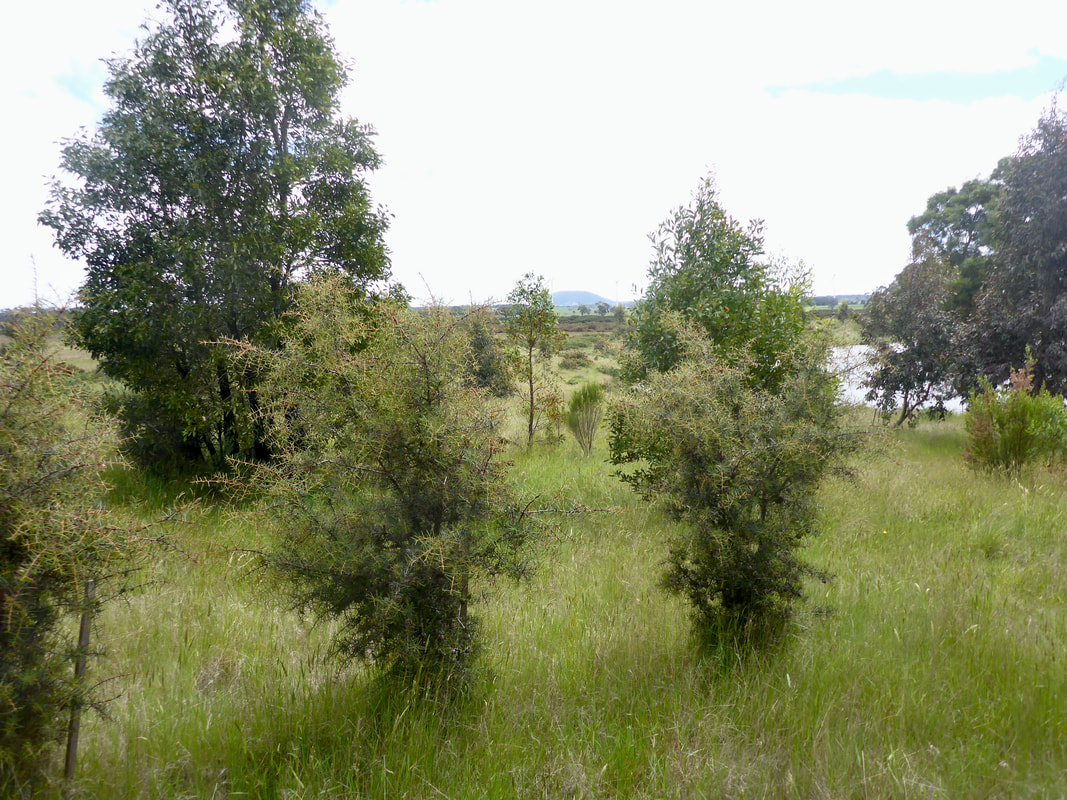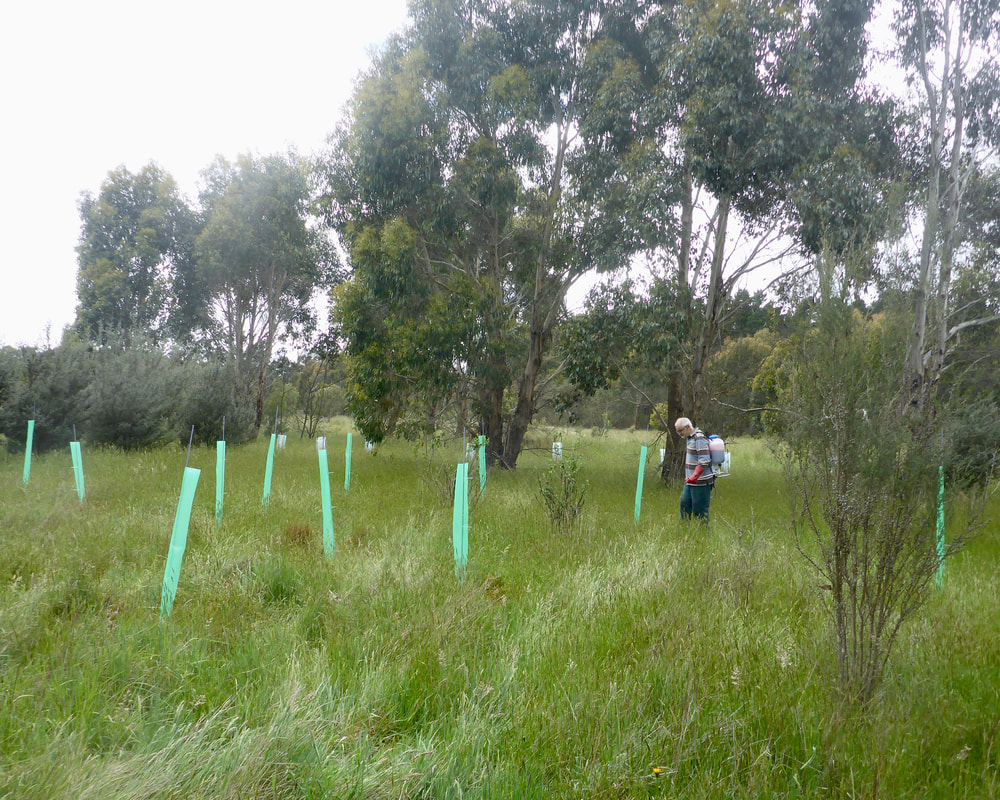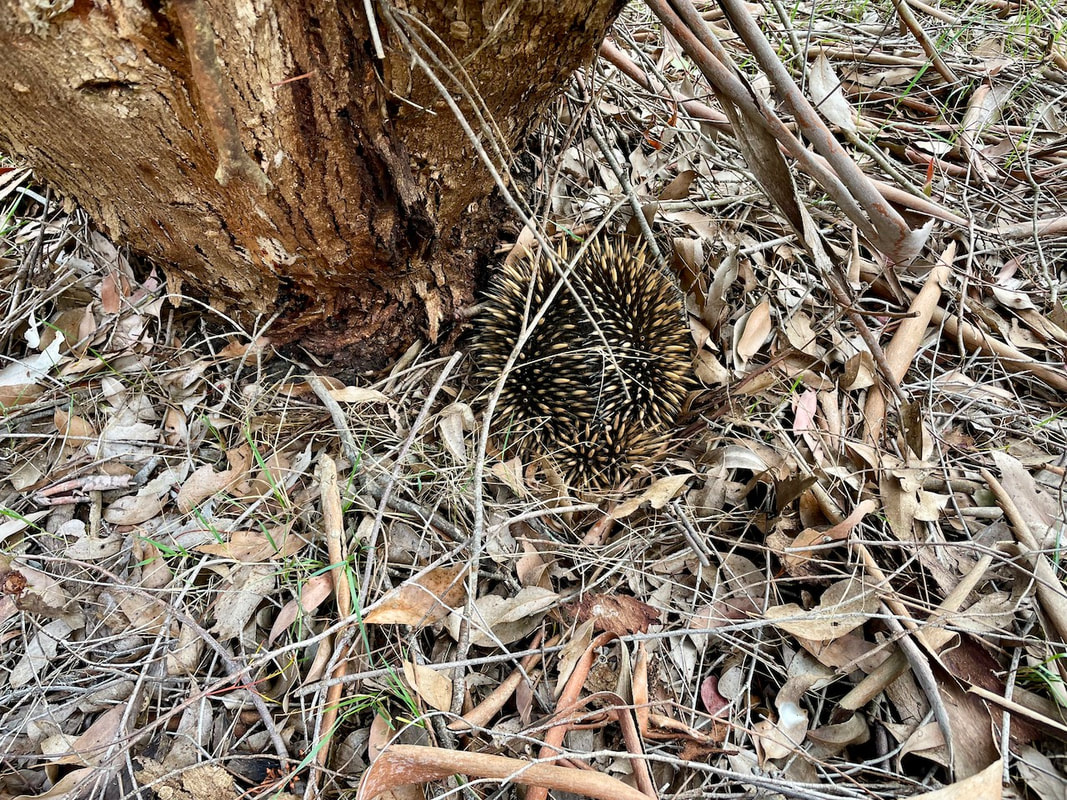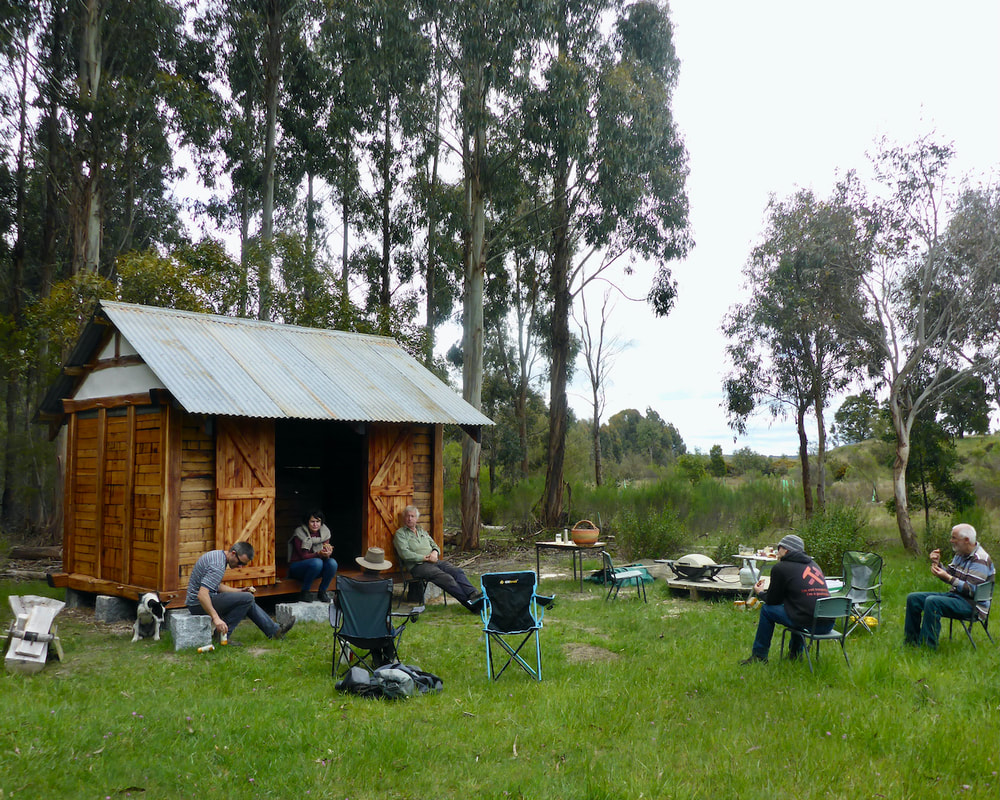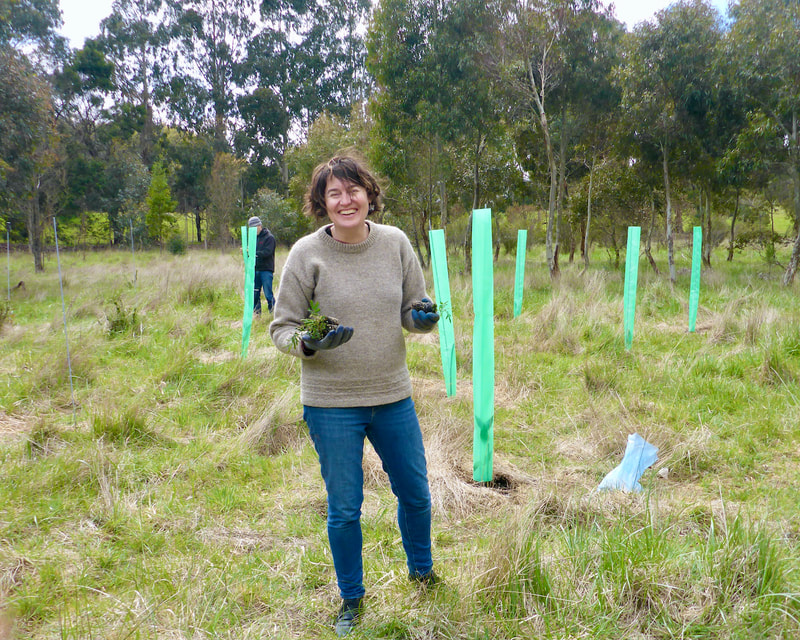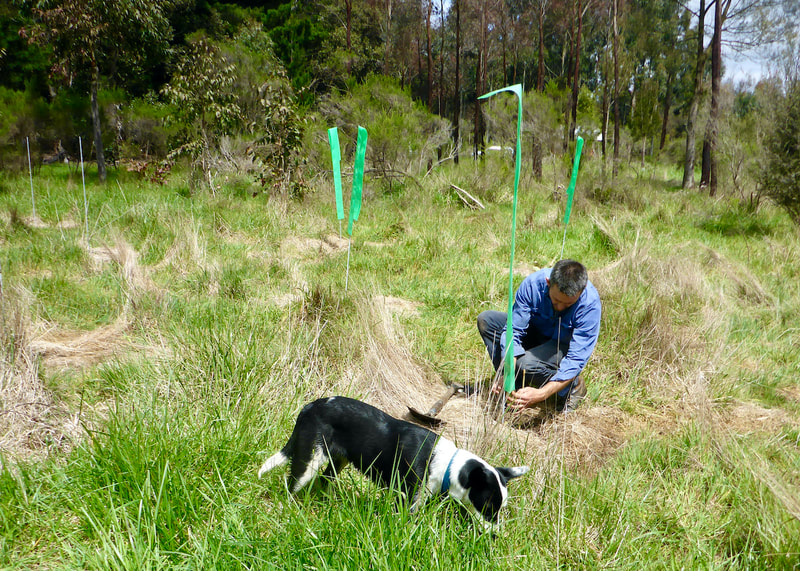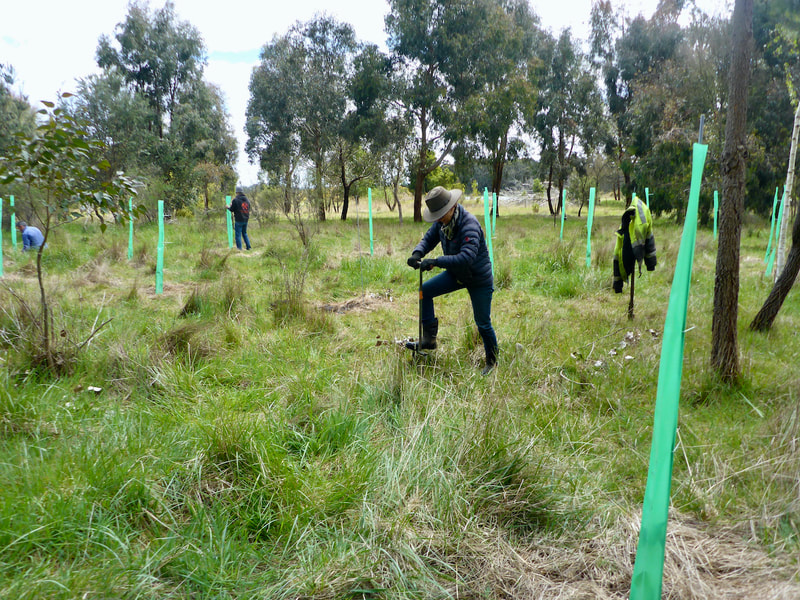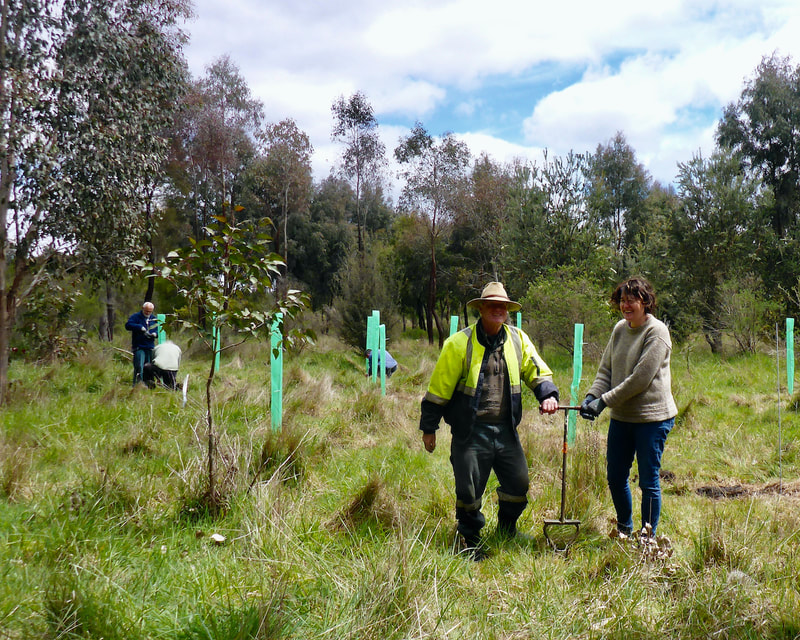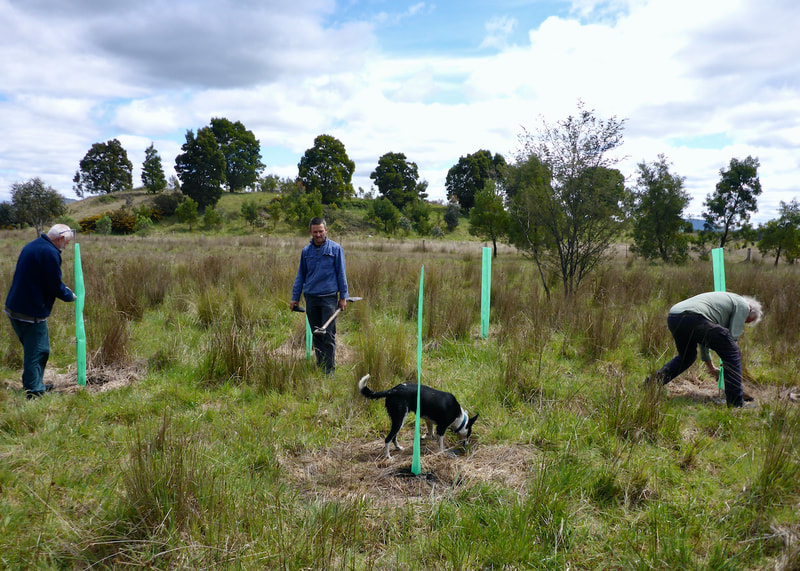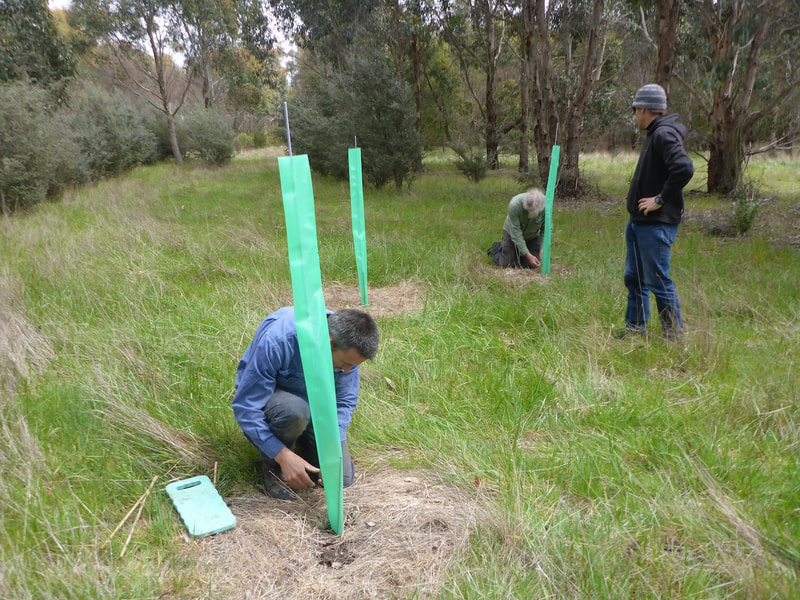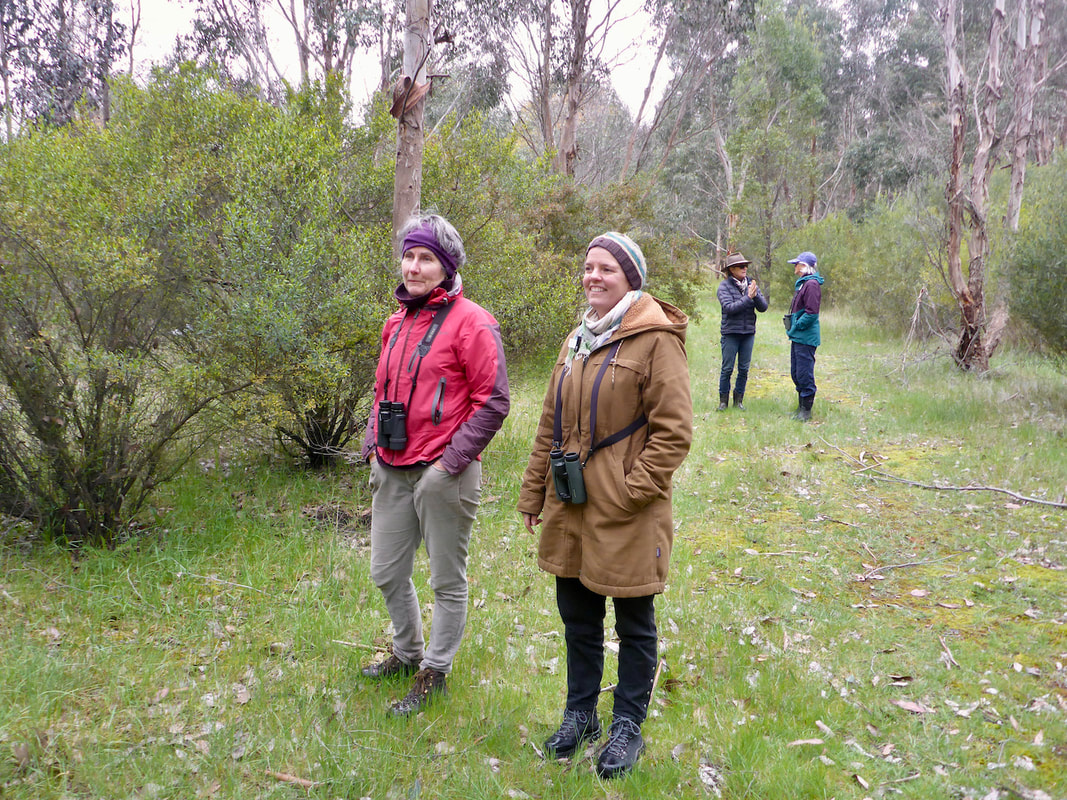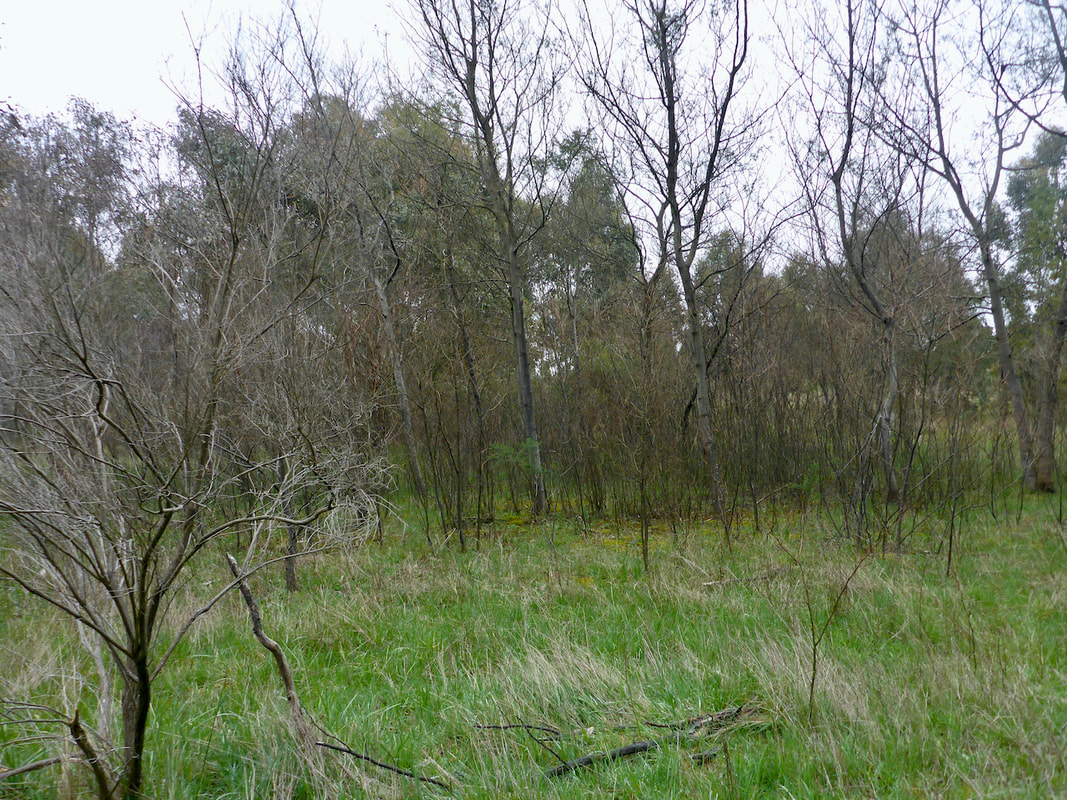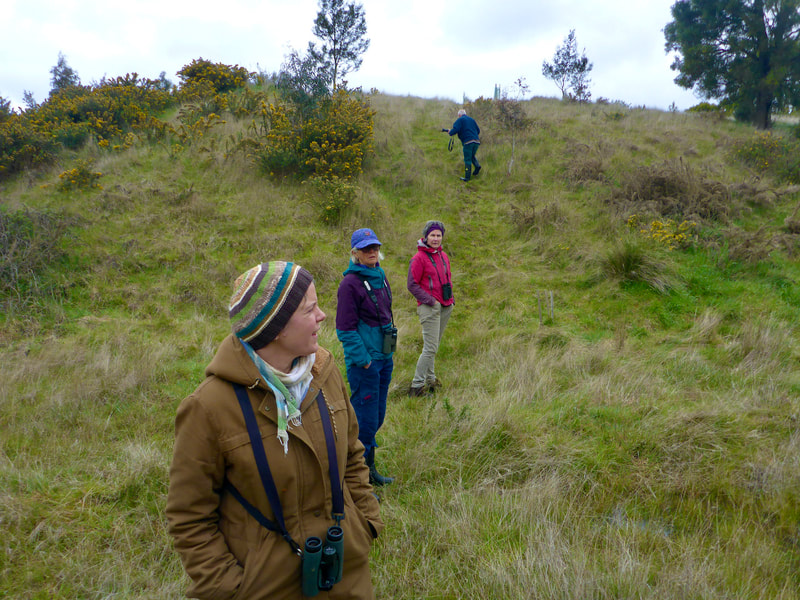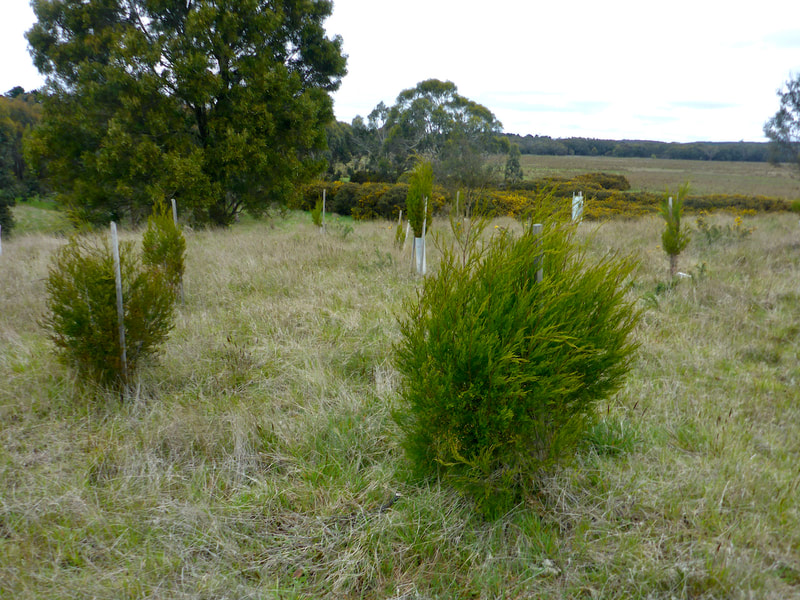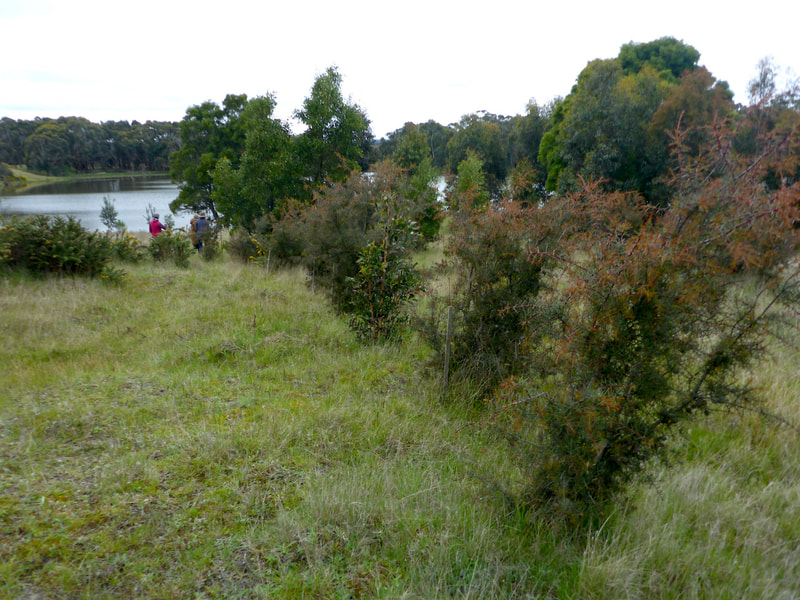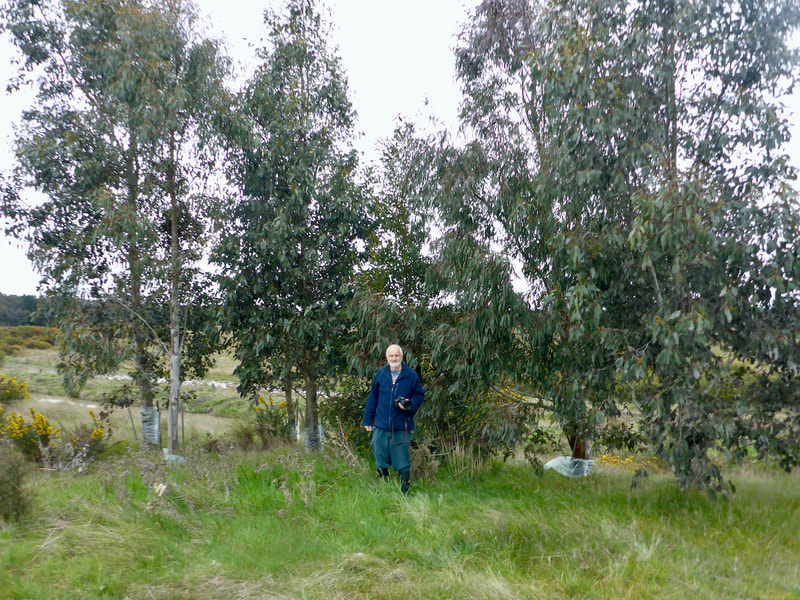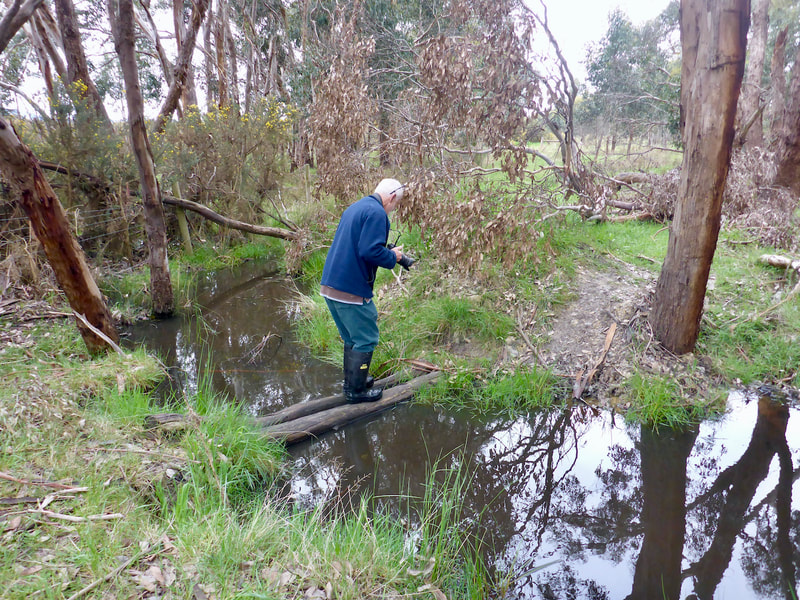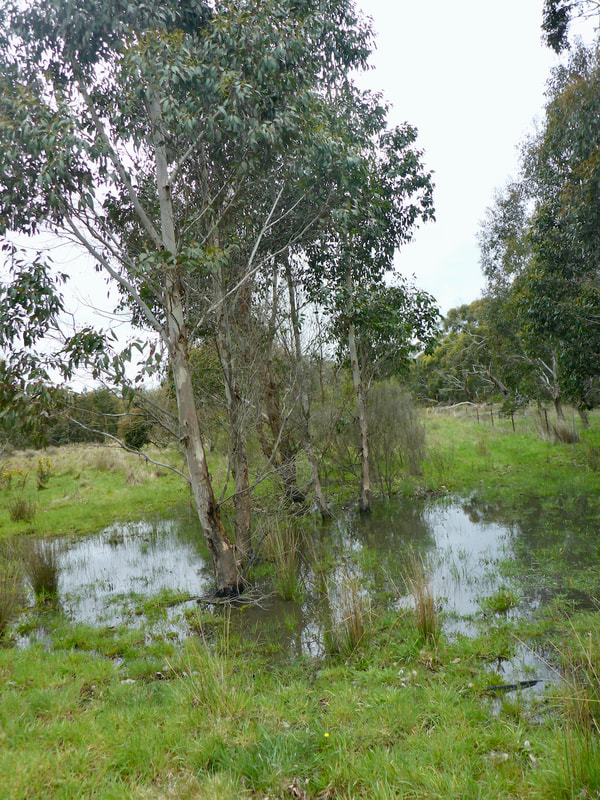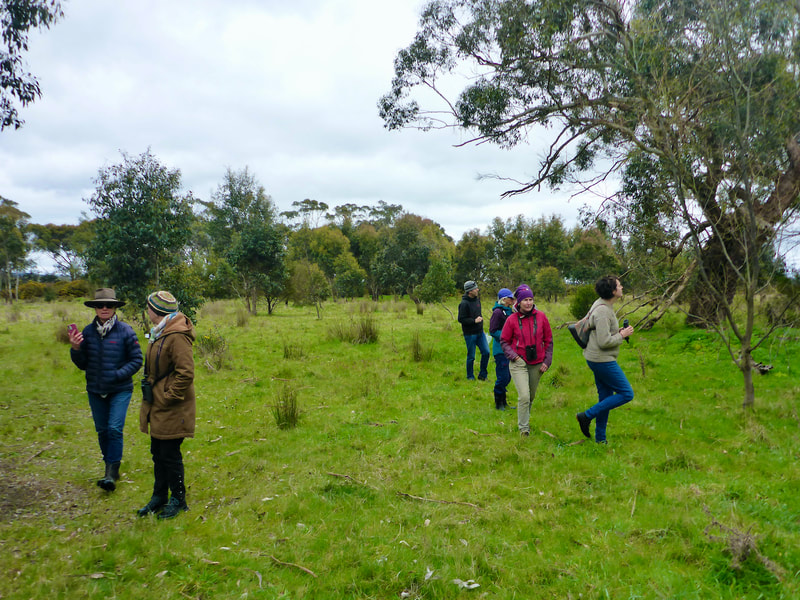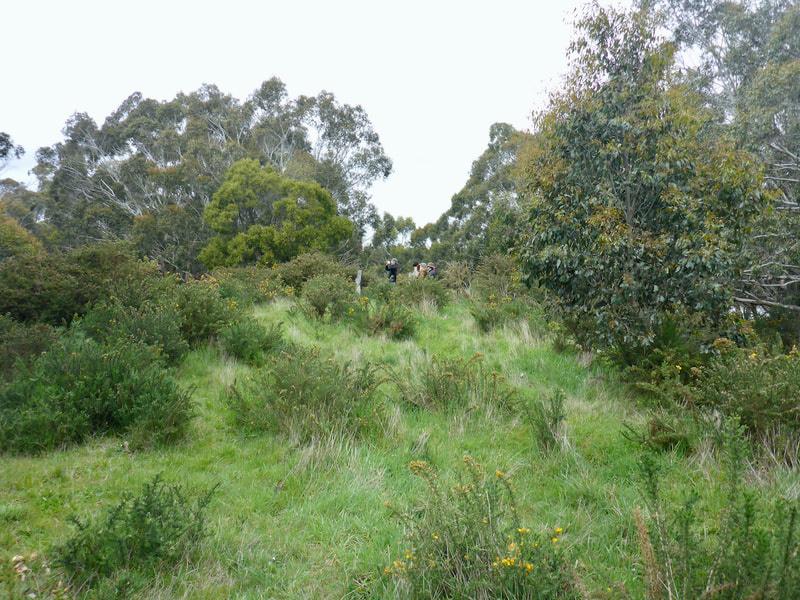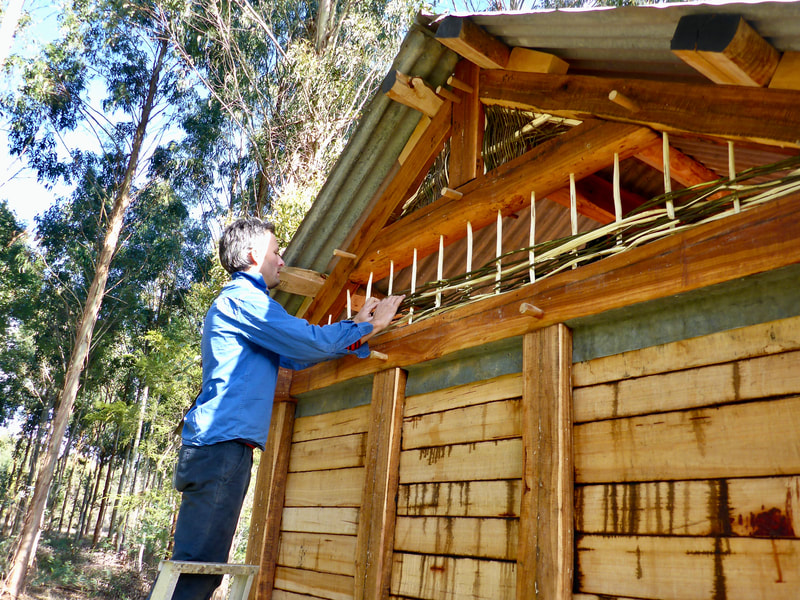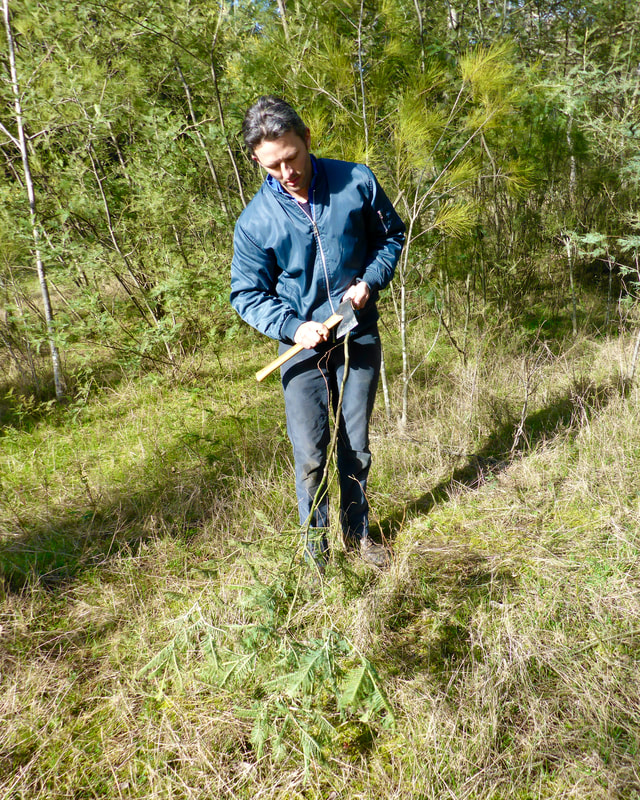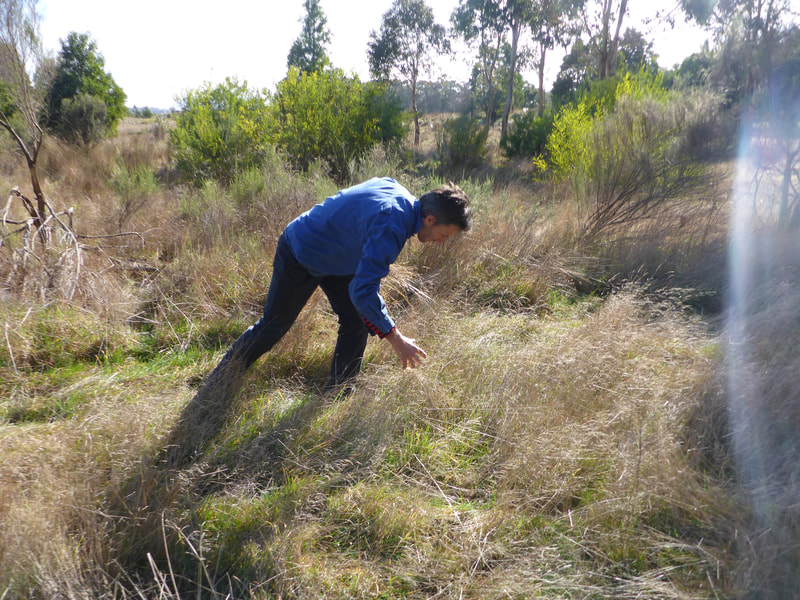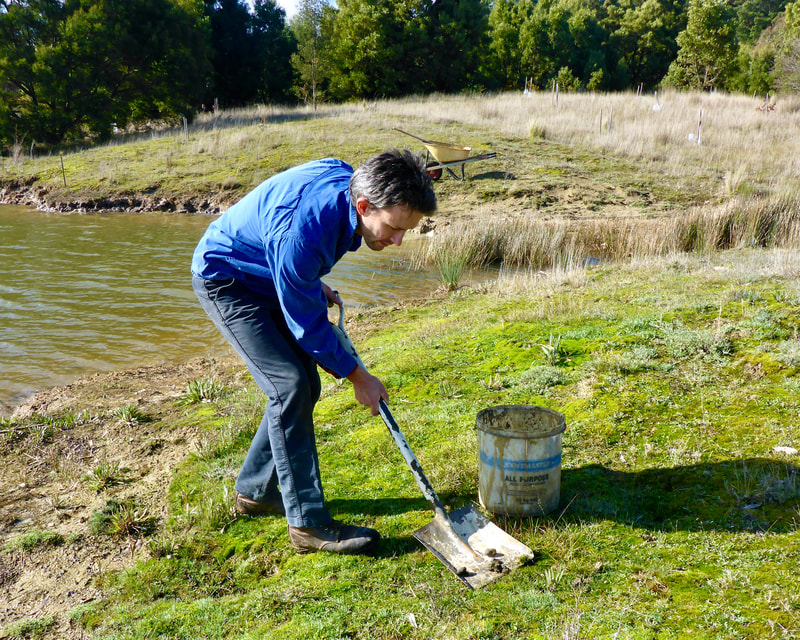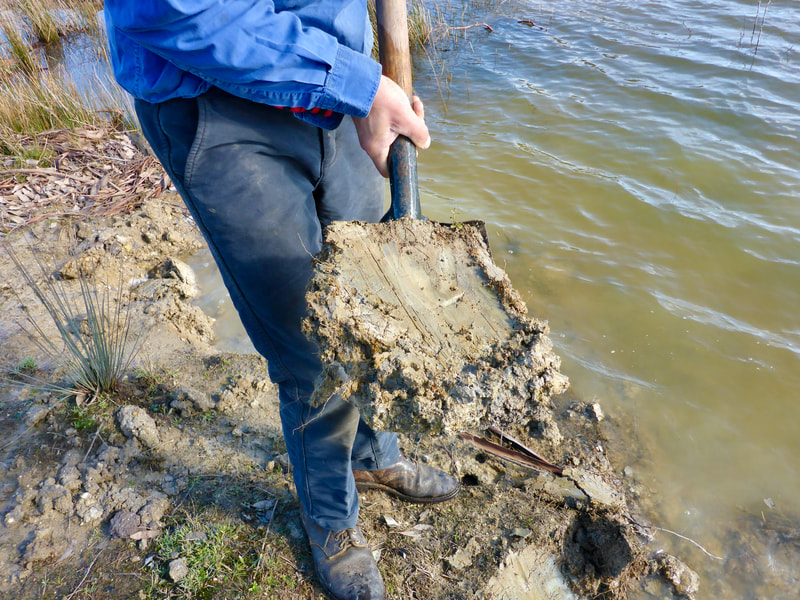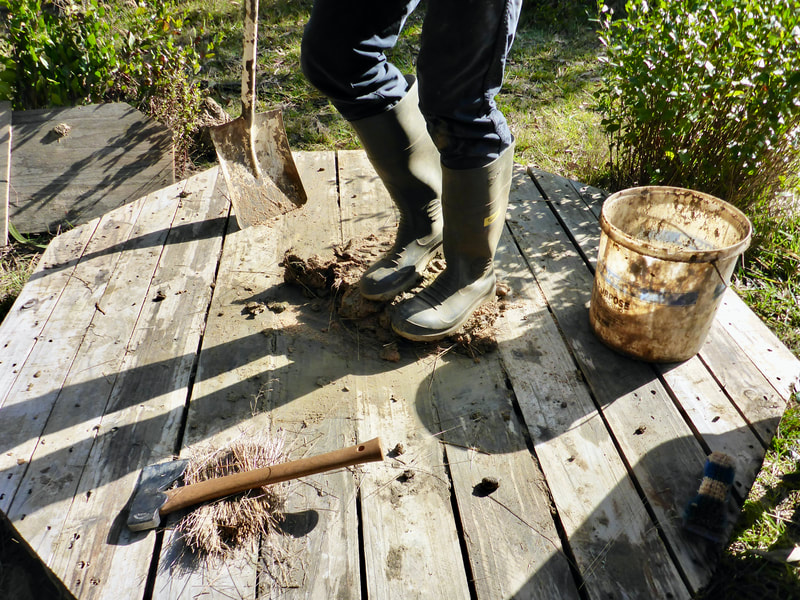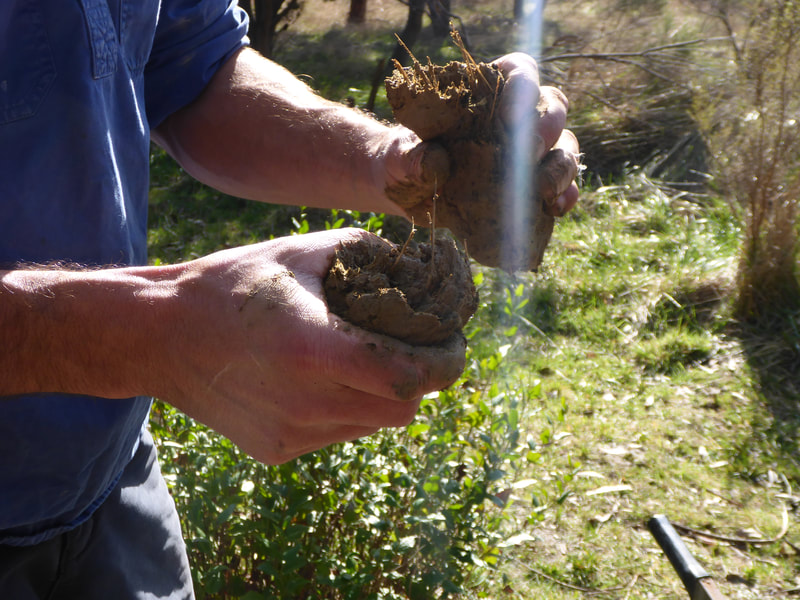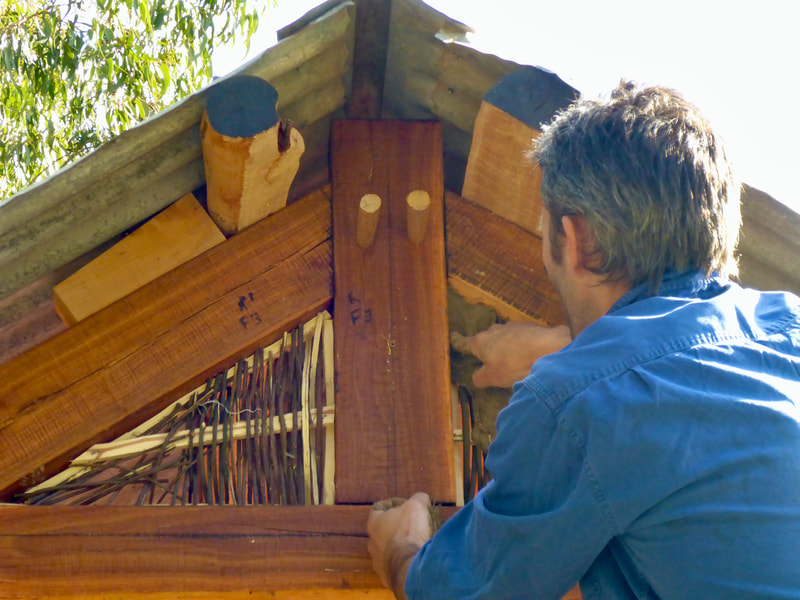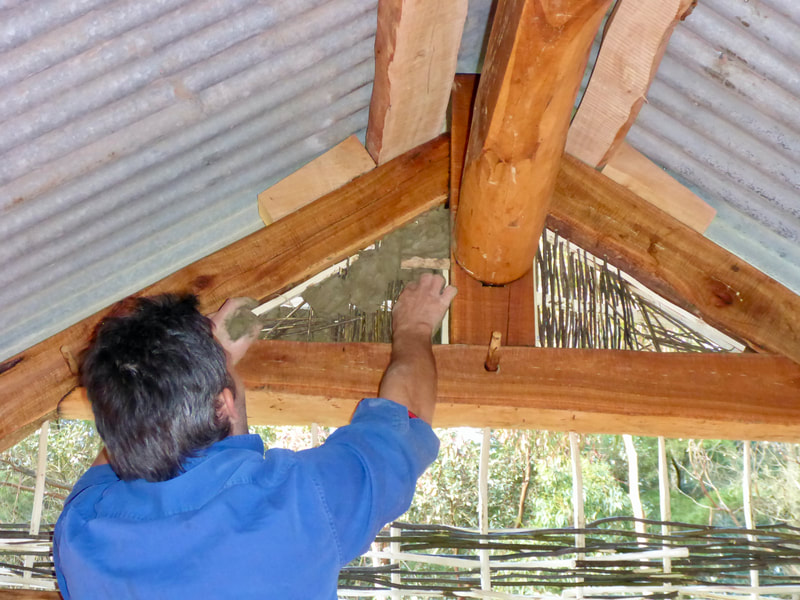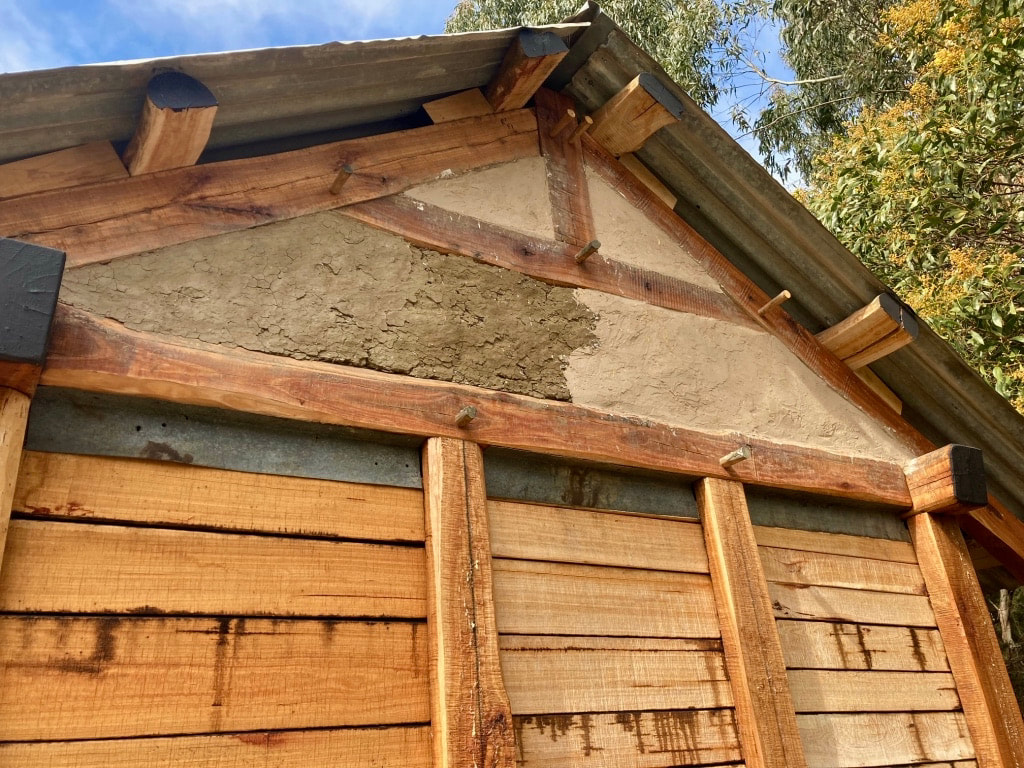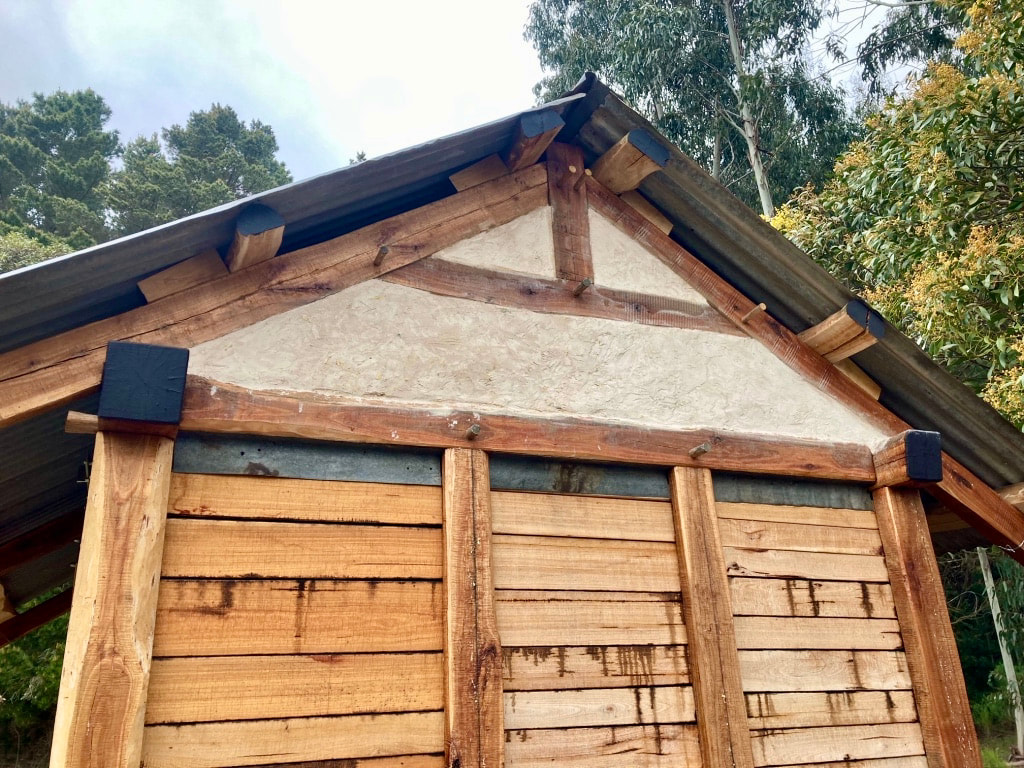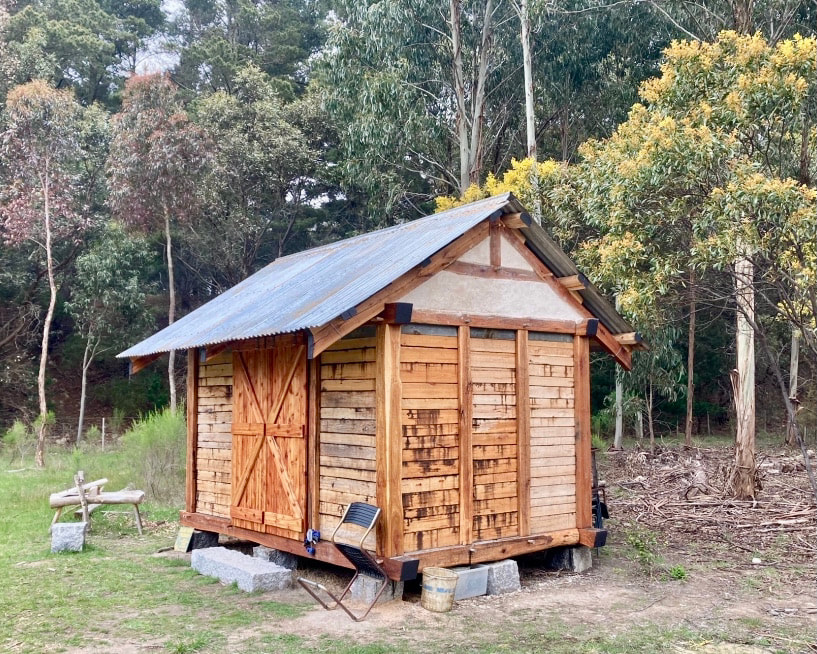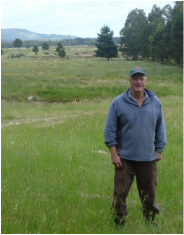| |
|
We had a dozen or so people come to the picnic lunch (really a sausage sizzle) on Sunday 10 April celebrating the drop slab hut’s completion. Gary and architect Geradine Maher were interviewed by freelance journo Genevieve Barlow.The weather was perfect and people seemed to enjoy themselves. A fitting end to the project
3 Comments
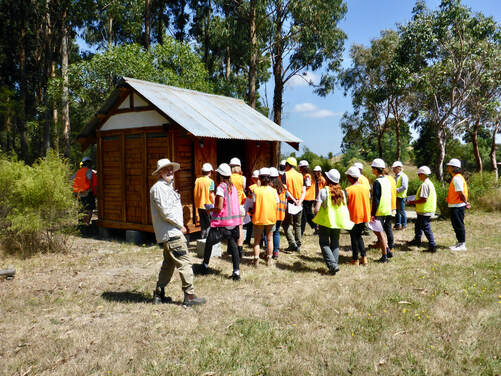 Antanas brought 20 students to ImLal as part of his annual Forest Systems Field Trip on 24 February, 2022. A few weeks later, 'Florry' Florentine from Federation University led his annual trip of land rehab and ecological restoration students to ImLal. Both remarked on how "unique" our site remains, marrying both conservation and production. We noted that three of the sequoia are now topping their guards! After four months since planting, sheoaks and messmate growing straight and strong in Rowan Reid's tall tubes with a flexible post to cope with bouncing roos and grazing wallabies. The critters do push the sleeves up so need regular checking. The sleeves have proven too tight for spreading shrubs like the banksia.
Lime render beneath the eaves and brass handles on the double doors were the final touches added by Lachie. Below is a gallery of images of the completed 21C drop slab hut.
Annual spraying of gorse on the mullock heap top. Hakea decurrens still going strong (middle). Last of the black wattle going in (bottom). Not much gorse left to spray in ImLal South. Spot the echidna trying to hide. She roams around the west end of ImLal South, but we hadn't seen her for a while, so it was a pleasure to re-encounter her during the spring bird survey.
We topped up patches around the southern 5ha of the biorich plantation after the spring bird survey – with 40 black wattle, 20 silver banksia and 20 messmate stringybark.
Gary had sprayed the grass twice with glyphosate and marked the various locations for planting. The long sleeves and the bendy fibreglass poles were purchased from Rowan Reid and are designed to deter bouncing roos and grazing wallabies. Hopefully, the sleeves are not too narrow for the banksia's spreading form. The ground was saturated, with water pooling after being dug into in a few spots. Will the tubestock drown? Like the long sleeves, yet another real life experiment. The black wattle and messmate are both timber species used in our 21C drop slab hut. The silver banksia is a locally endangered species that seems to thrive at ImLal. We hope to establish a seed orchard for the silver banksia (Banksia marginata) with Seeding Victoria. We ended the morning's events with a barbecue in the clearing next to the newly completed 21C drop slab hut. No doubt, the first of many such enjoyable occasions. 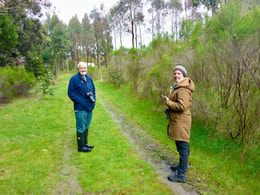 Tanya Loos (on right) with BRT President, Gary Featherston. Tanya Loos (on right) with BRT President, Gary Featherston. Seven of us took part in the spring bird survey led by ornithologist Tanya Loos. As enthusiastic and competent as ever. It was a still cloudy day with a couple of serious birders joining us. While only 33 species were recorded, these were present in large numbers, such as sighting of seven or more yellow faced honeyeaters – the first-ever species we recorded at ImLal. The plant growth this year has been truly remarkable, with even the shrubs now towering above us. One pronounced change was the dieback of the silver wattle, under serious attack from a mite. It's been a very wet spring and there was a lot of water laying about. 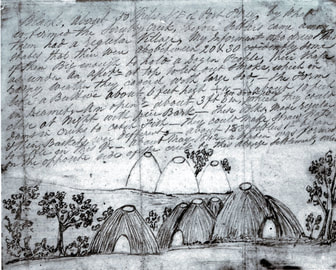 Indigenous village of domed huts, sketched SW Victoria, late 1830s. Indigenous village of domed huts, sketched SW Victoria, late 1830s. Wattle and daub the English call it, but we decided to draw on a cultural heritage that pre-dates our recent colonial layer. We’re going way back beyond the miner’s bark hut and the cattlemen’s drop slab hut. Back to the weatherproofing method applied for millennia to the sturdy beehive domes built by Indigenous people in what is now southwest Victoria. While the English brought the technique with them, let’s not give them the credit for its invention. Wattle and daub is simply ye old English for the stick and mud rendering used worldwide for filling the gaps in huts placed on plains and peaks wherever the weather was cold and wild, and the wind whistling through walls constituted an existential threat. Back in the motherland, the English wattle was a small flexible stick, often from a willow, cut green to ensure suppleness. In Australia, the word wattle became applied to the ideally suited, abundant Acacia species throughout our golden plains. To daub is to smear with mud or any soft, adhesive matter. Extra ingredients for ensuring a gluey mud mix consisted of grass for boosting structural strength and manure for added sticking power. So, in keeping with our place-based approach, Lachie and I looked around at what resources we had on-site within the biorich plantation. Swathes of young, invasive silver wattle sprouted within sight of the 21C drop slab hut’s clearing. For the sticky daub, Lachie pointed out we need look no further than the banks of the central dam, once a white clay kaolin quarry. Grass grew and kangaroo dung lay about – both in abundance. Through experiment, Lachie discovered how thin, straight wattle branches, with the knobs trimmed off, could be woven into a lattice at the gable ends, under the eaves. The thinner the better as they’re more flexible and allow a tighter weave. Clay and grass were trampled together with a generous dose of kangaroo dung. The resultant dark muddy mess had the consistency of play dough and was easily squeezed by hand throughout the lattice weave. As it dries, you can expect the daub to crack. For impenetrability and a smooth, flexible finish, Lachie applied a lime render, the formula for which is one part lime putty, three parts sand and chopped fine straw. The putty is made by soaking hydrated lime for 24 hours. Two coats of render were applied by trowel to the lightly dampened daub, then finished off with a lime putty wash, diluted to the consistency of milk and brushed on. In 1841, prior to settlement, Chief Aboriginal Protector, George Augustus Robinson, encountered a native village of 13 dome-shaped huts at Mt Napier made of arched tree limbs with small limbs, turf, grass and bark filling the intermediate spaces so it was proof against wind and rain. These were no flimsy mia-mias or humpies. He recorded they were “sufficiently strong for a man on horseback to ride over.” Other settlers in the southwest also noted seeing substantial huts over 2m in height and 3-5m wide – large enough to comfortably house a family. It would seem fitting that in this, the final step, we were able to hark back to a deeper cultural heritage than our immediate colonial past. Western civilisation, then and now, is hardly the apogee of sustainable ideals. We have much still to learn if we are ever – like the First Nations – to become custodians of the land to which we belong. For all ten Steps, visit – https://www.biorichplantations.com/blog/category/21c-drop-slab-hut |
AuthorGib Wettenhall is interested in how we carry out large scale landscape restoration that involves the people who live in those landscapes. That, he believes, would build truly resilient landscapes. Categories
All
|
